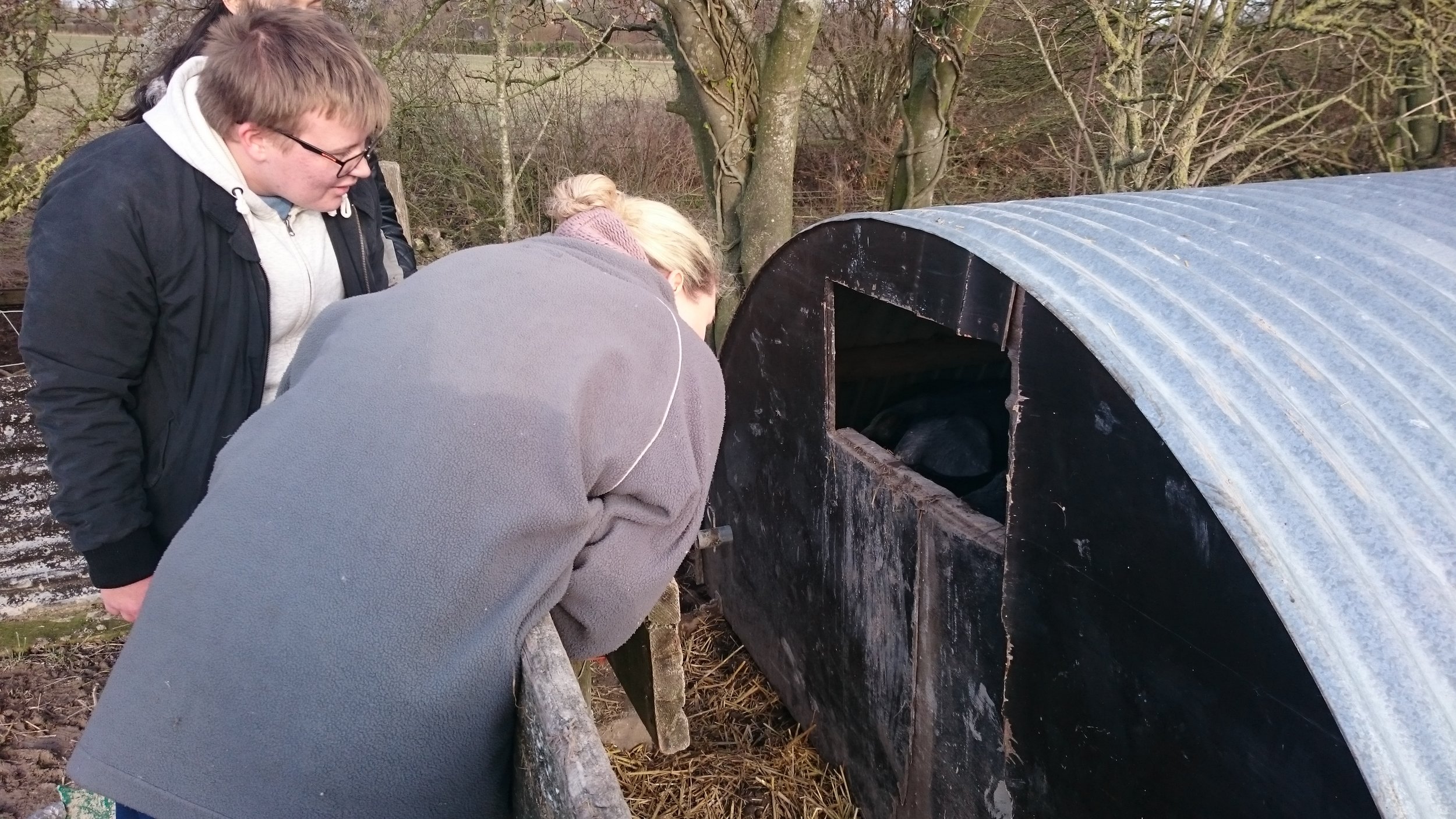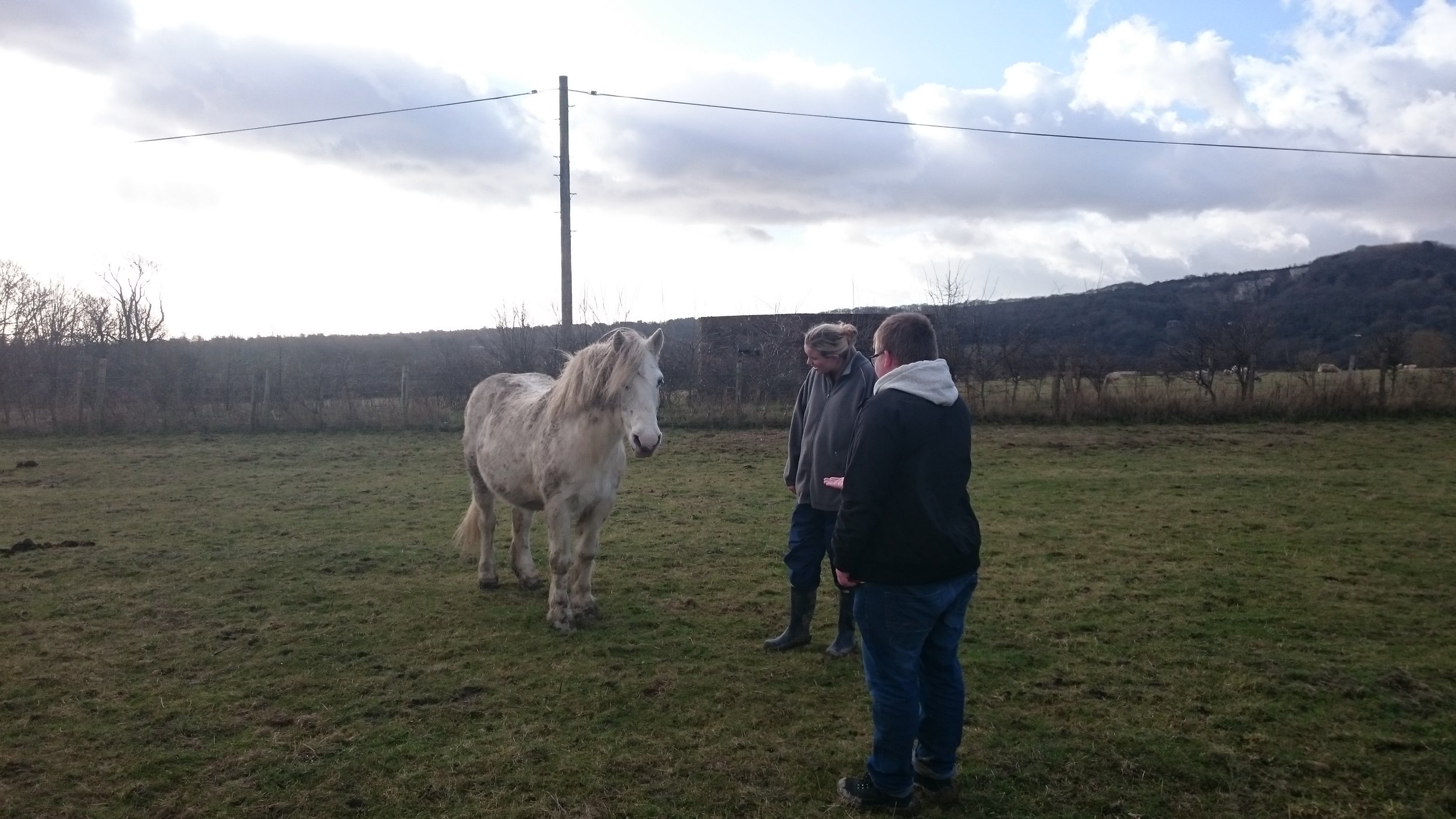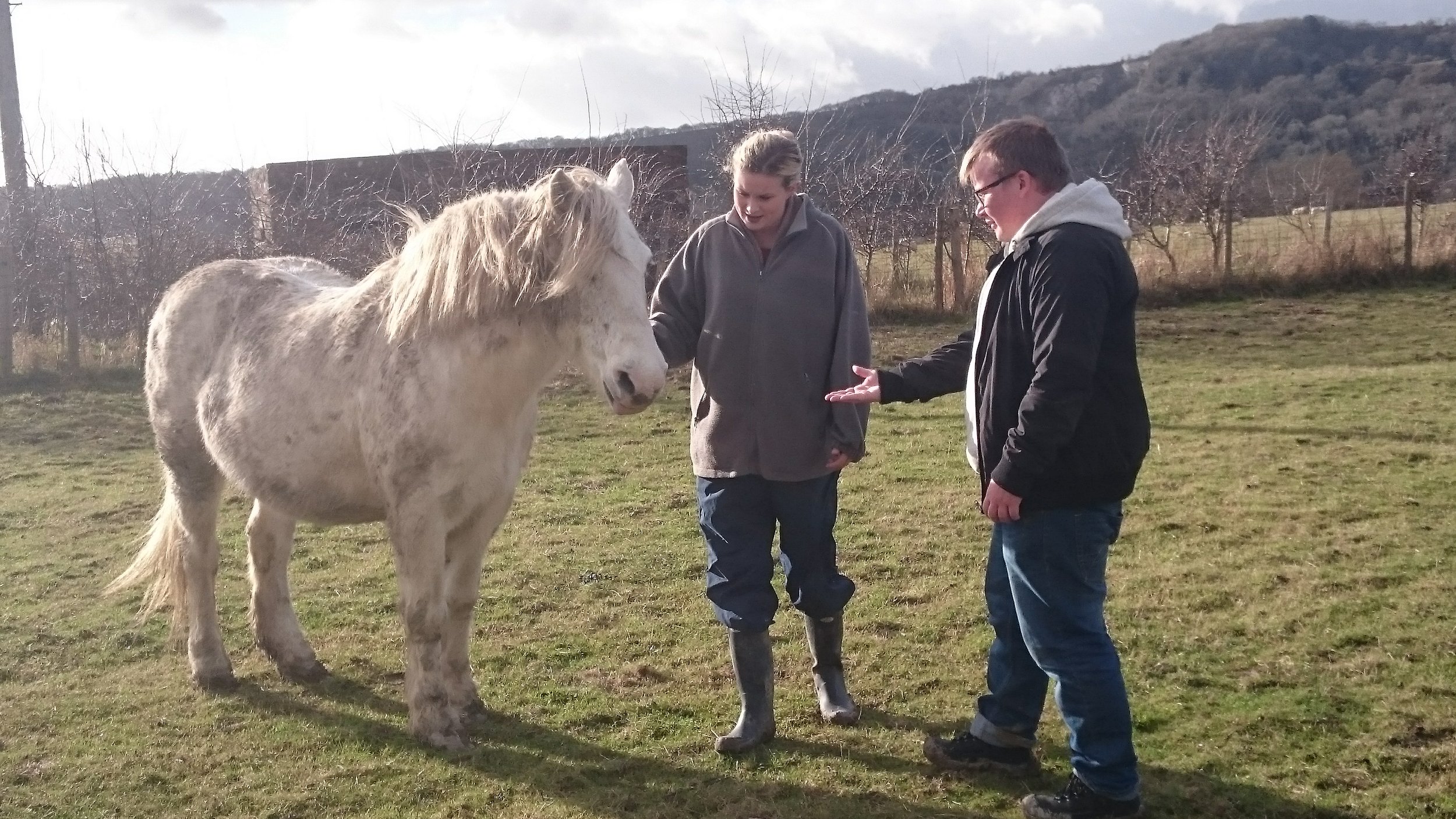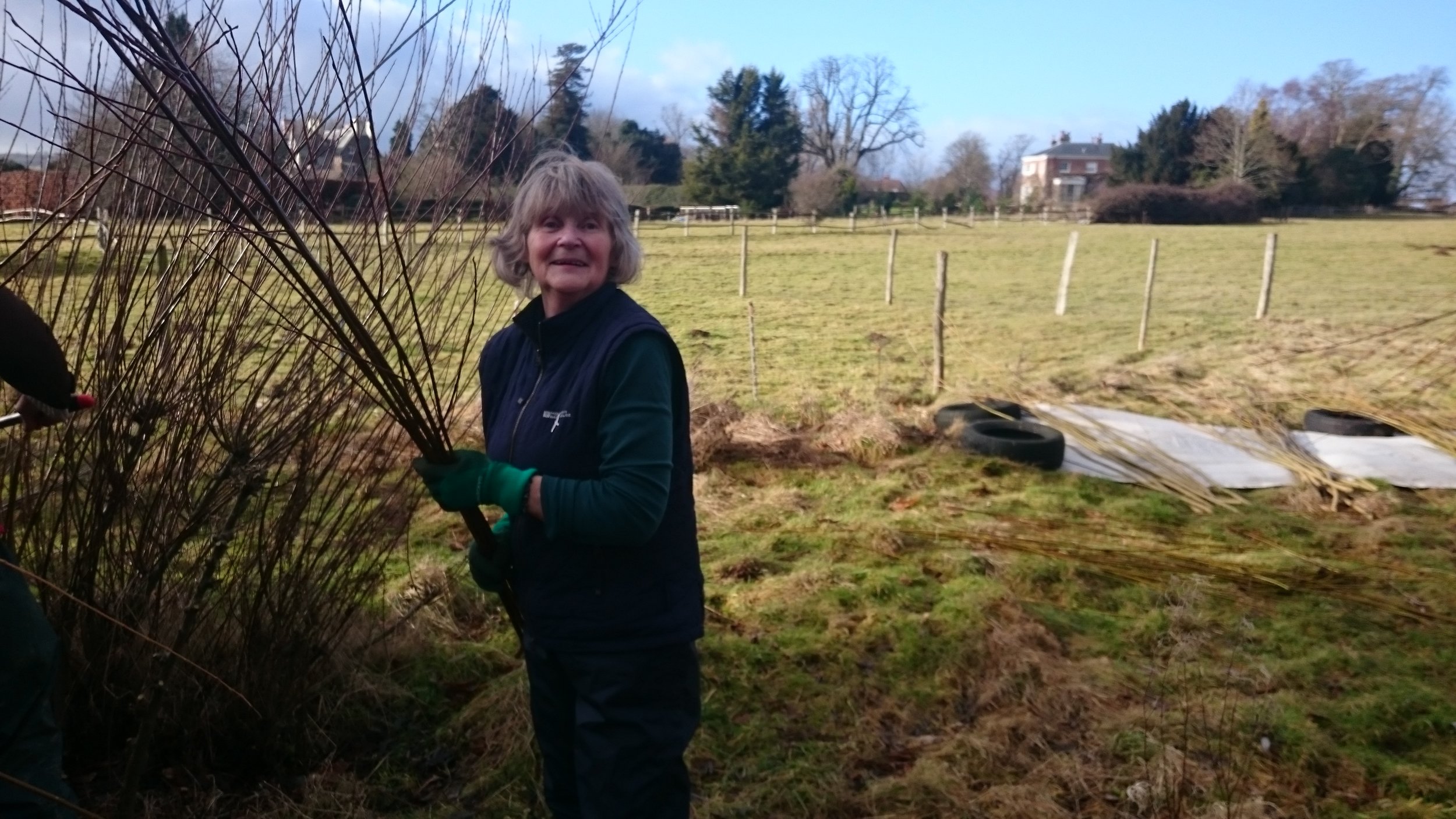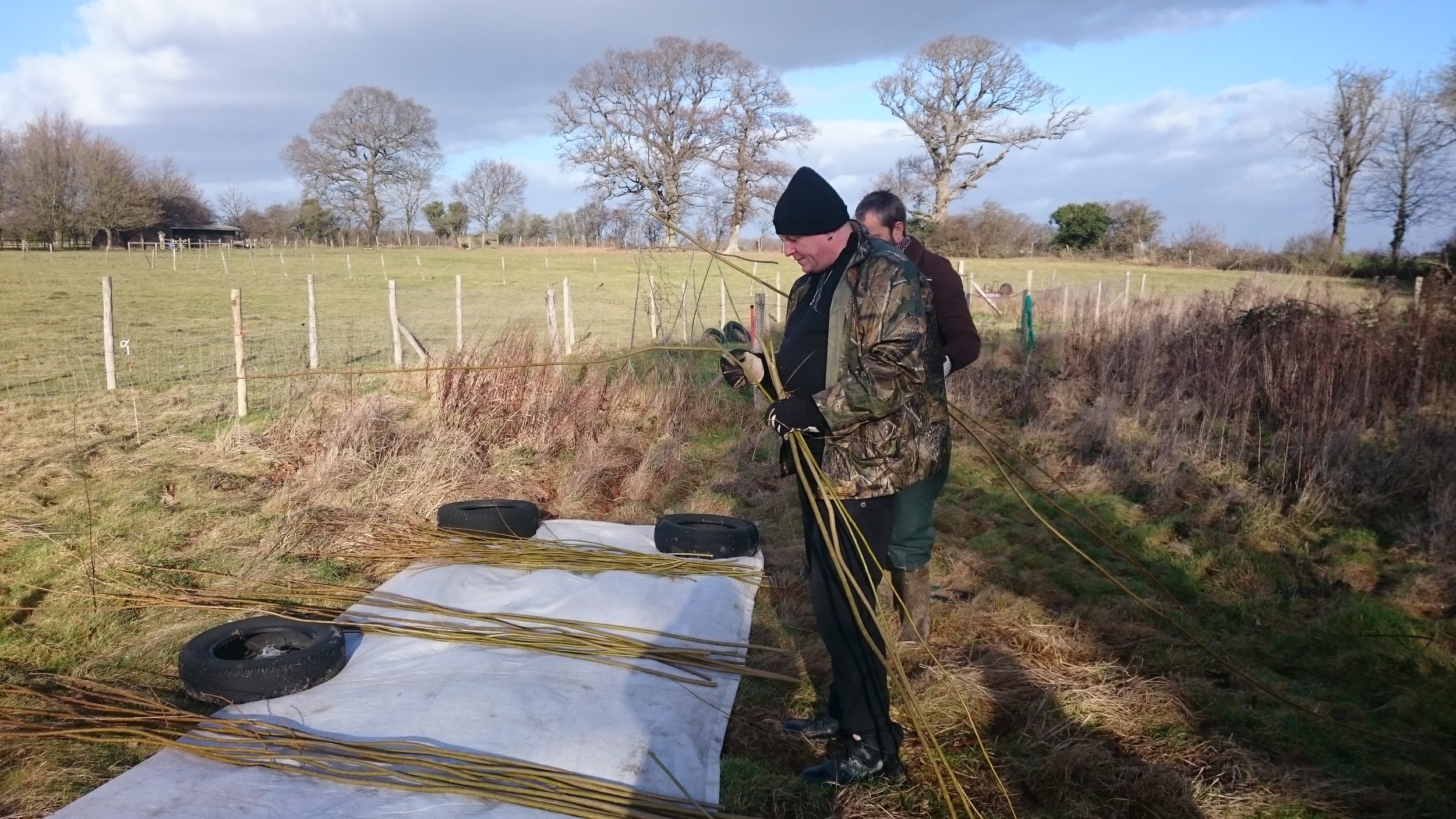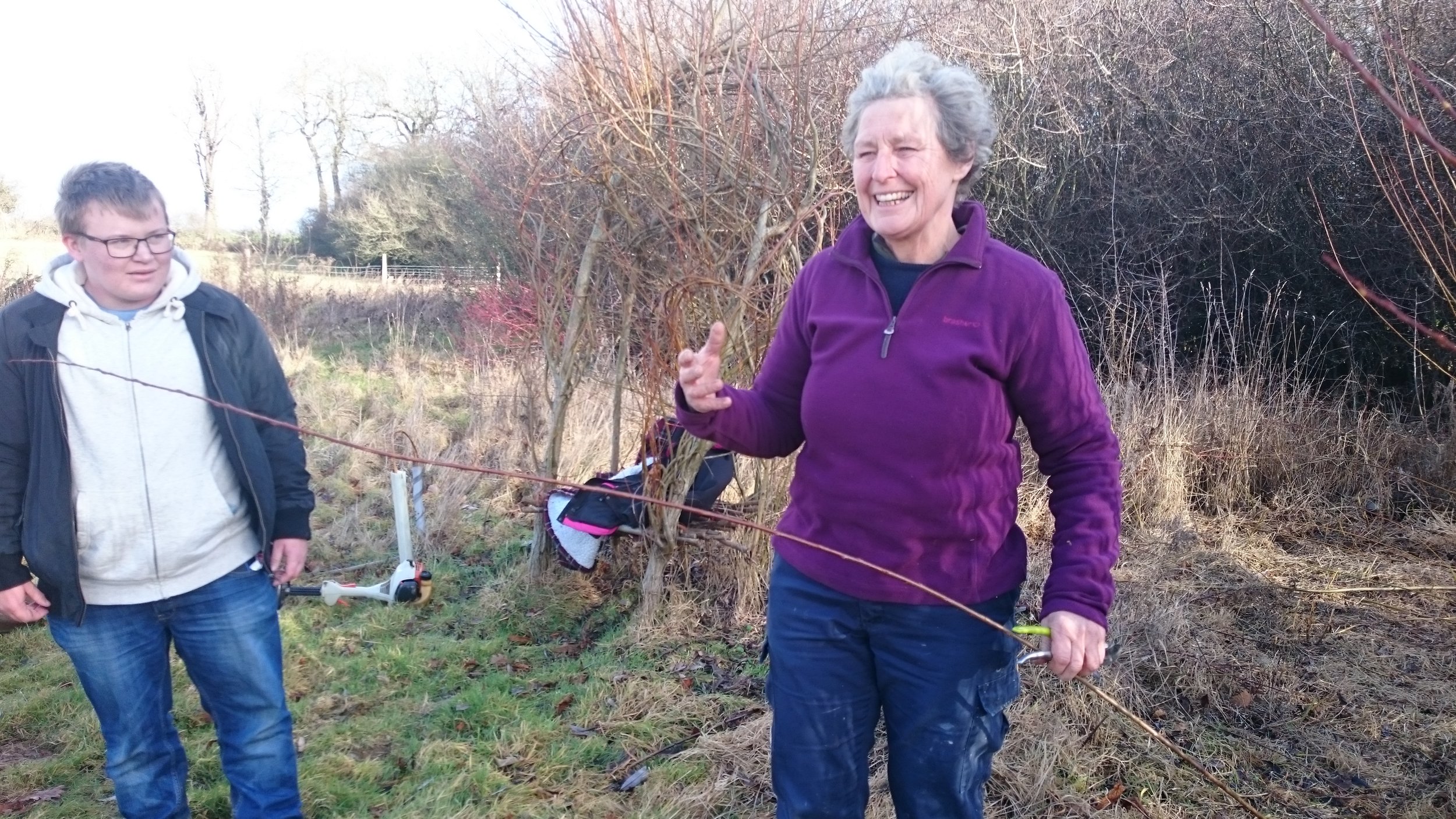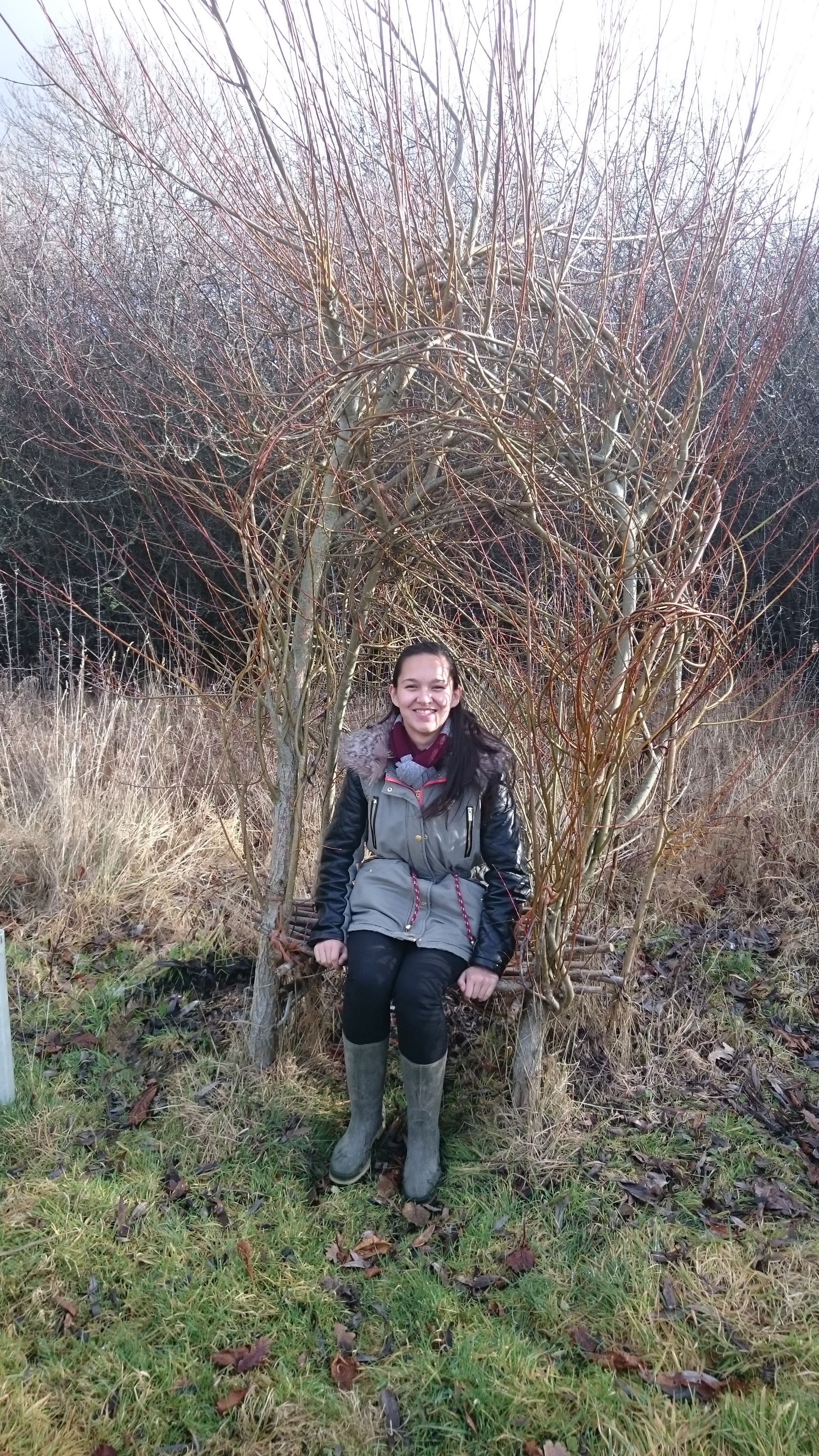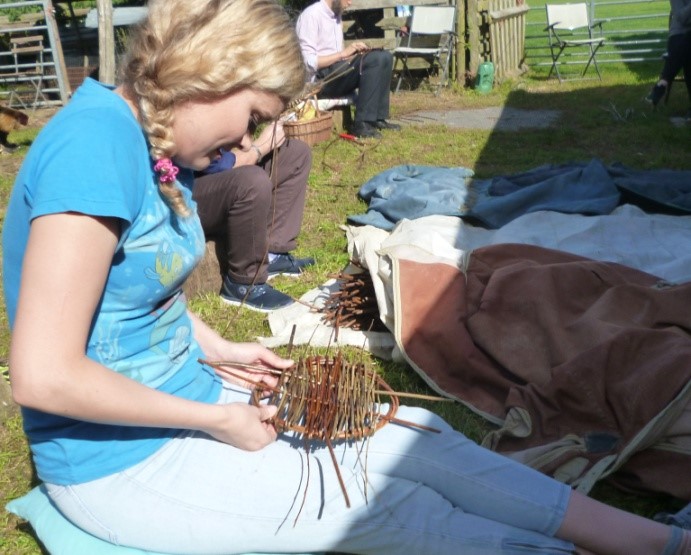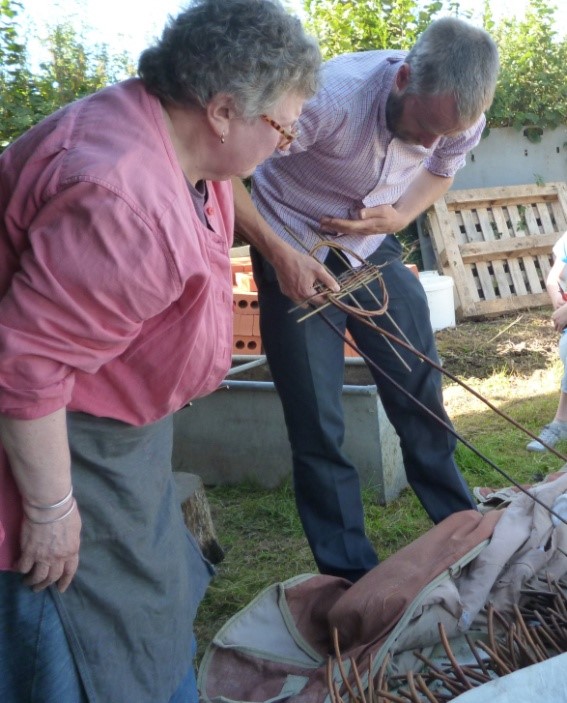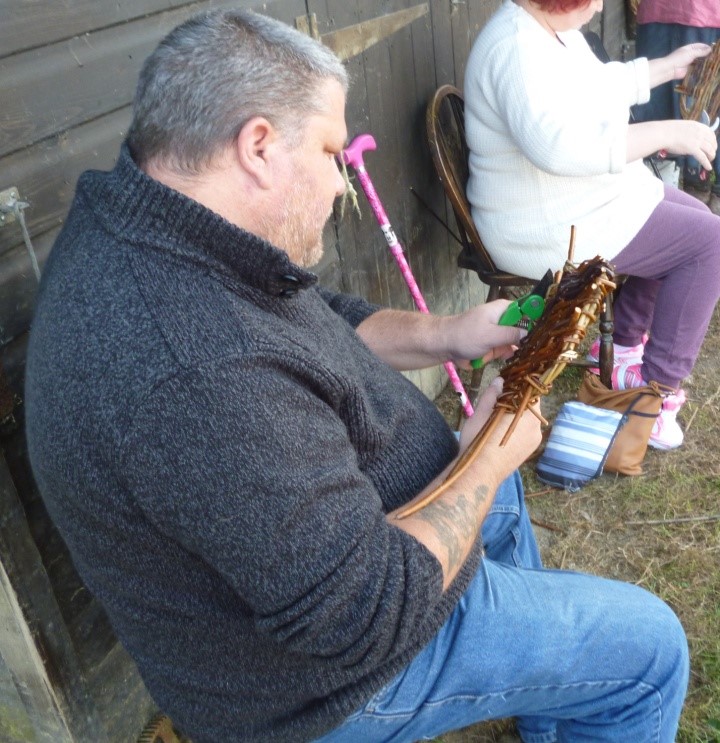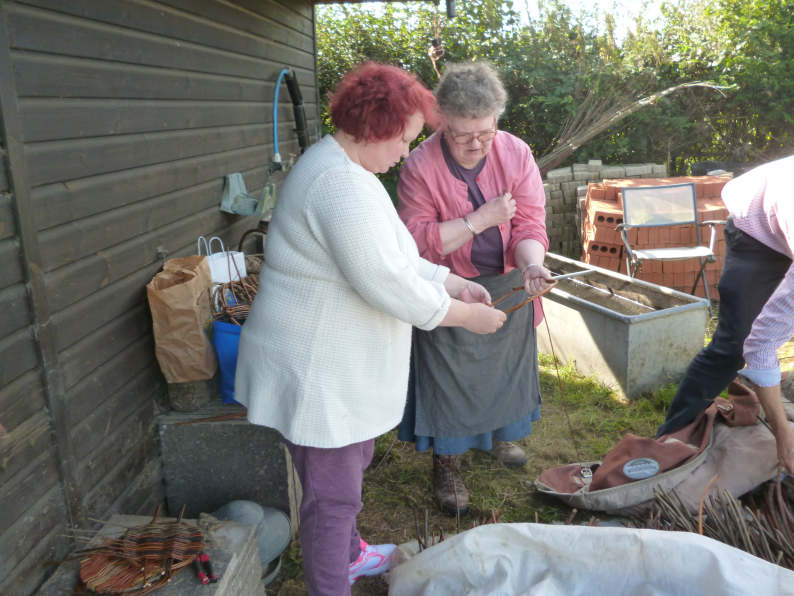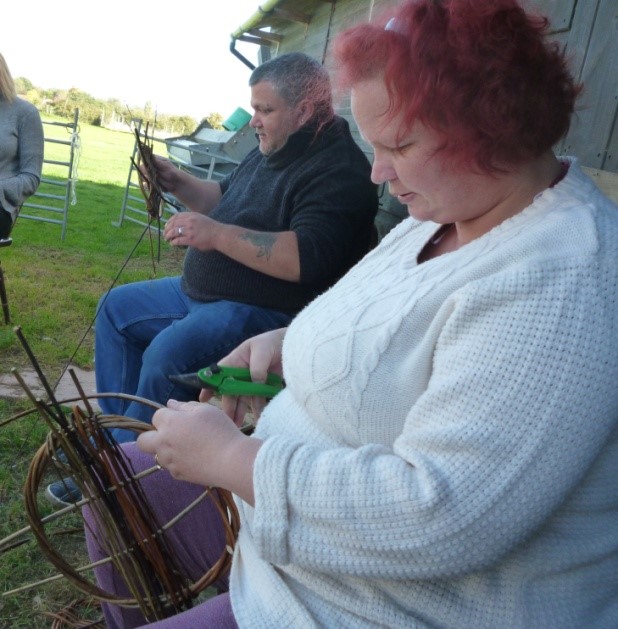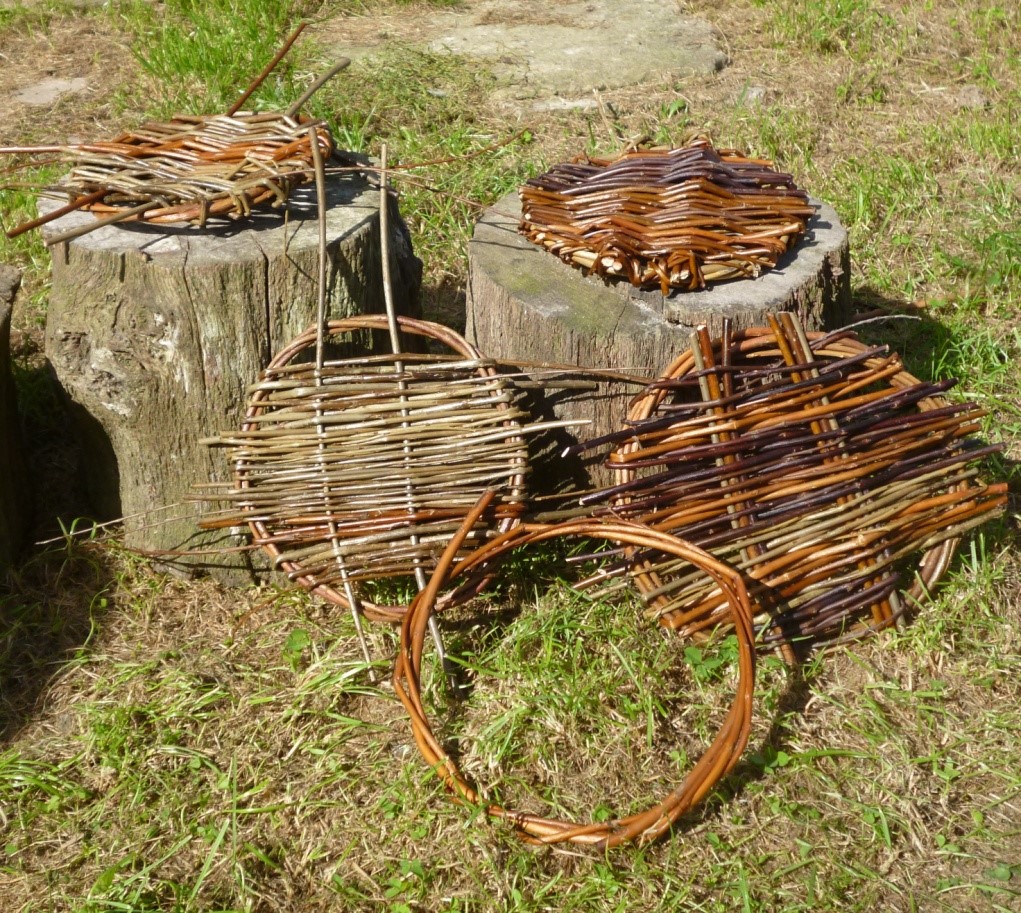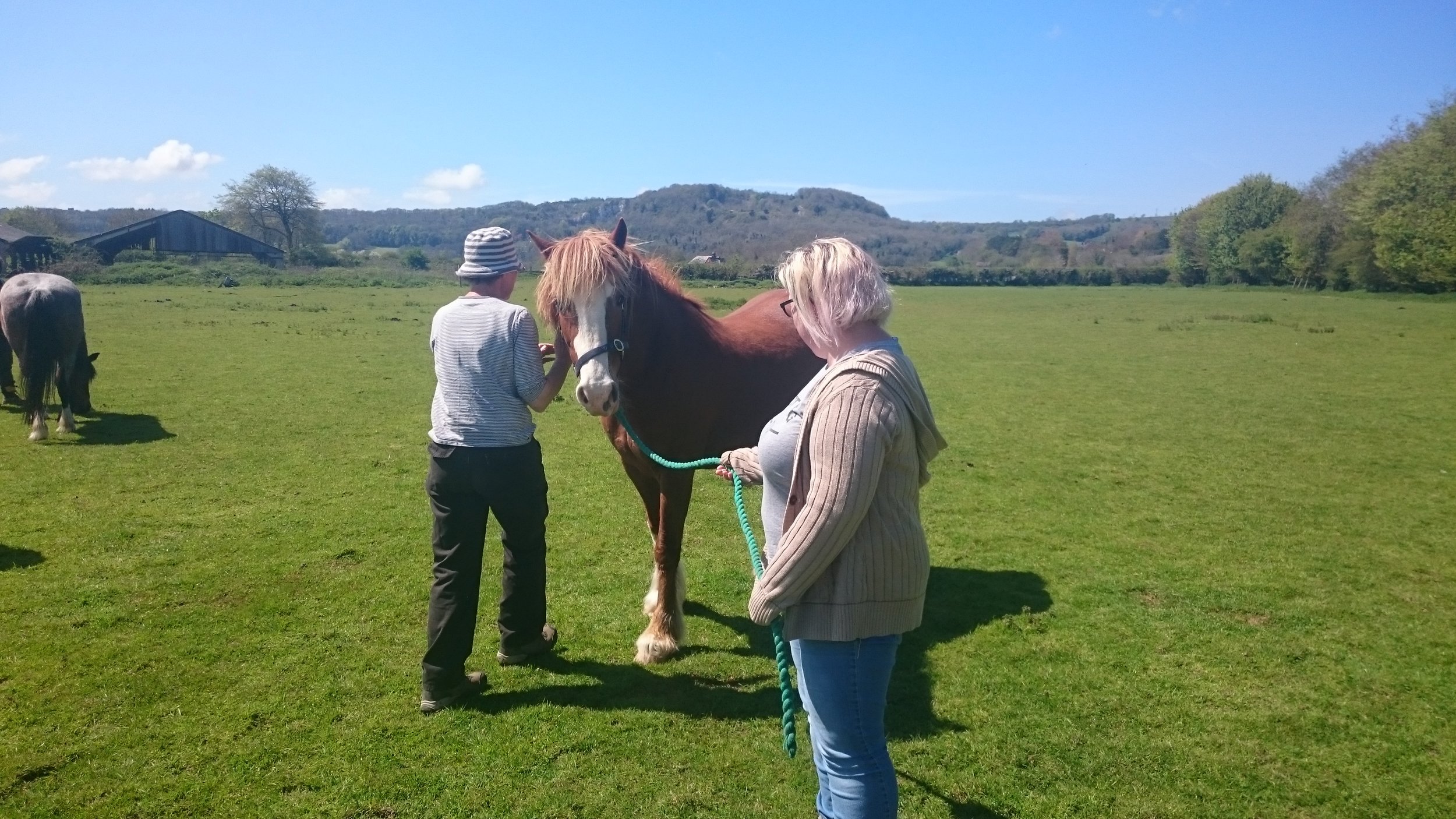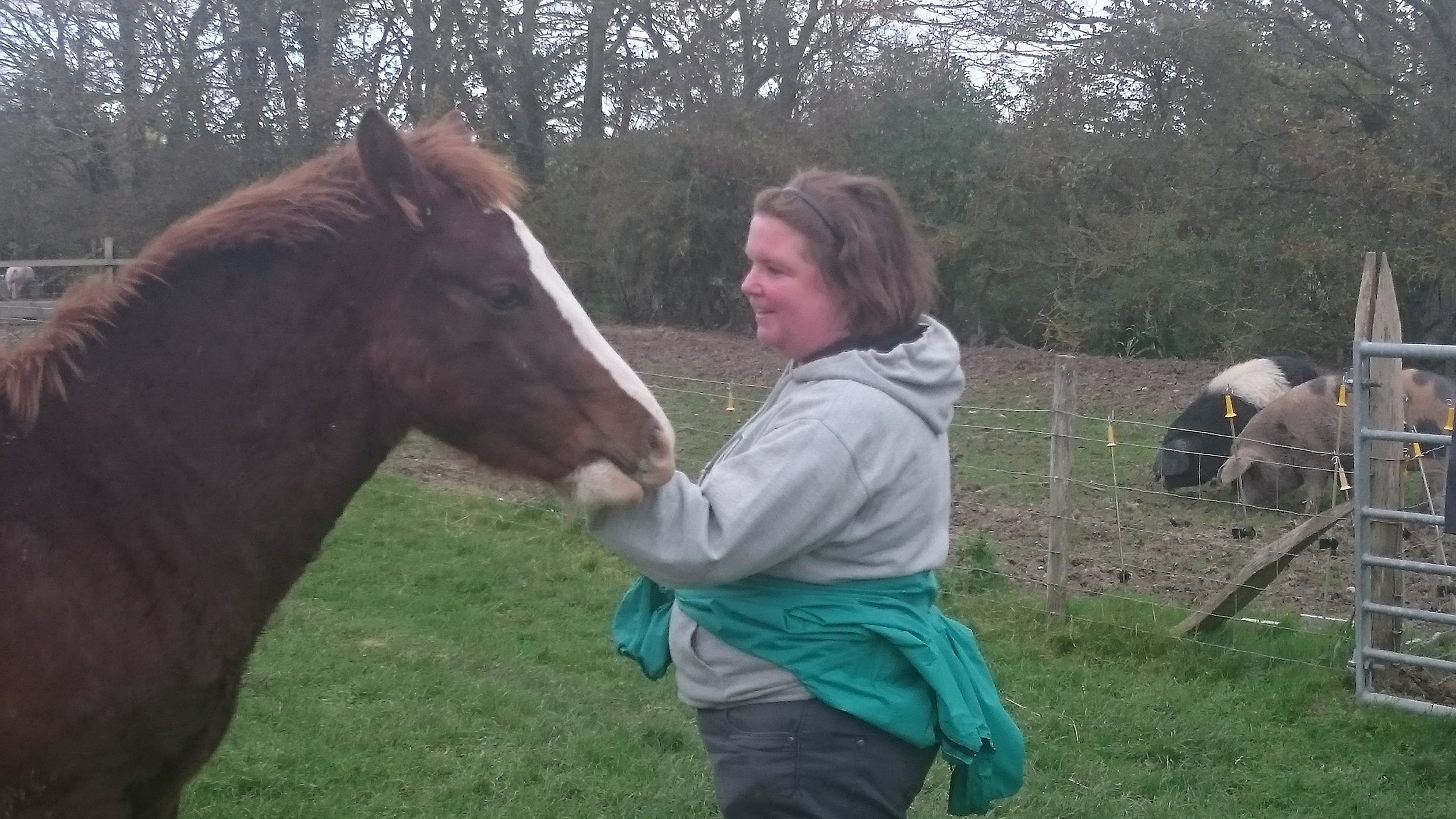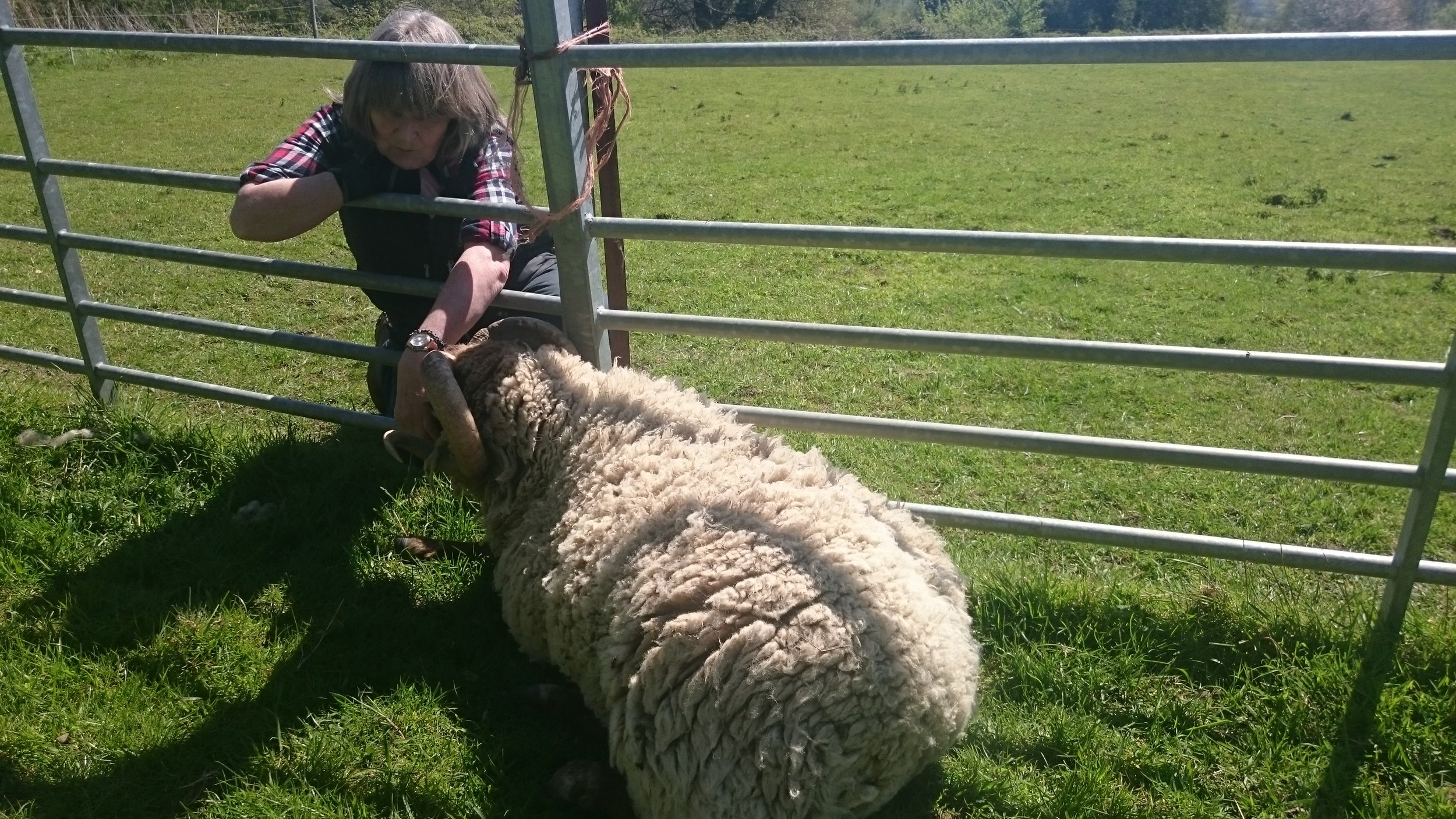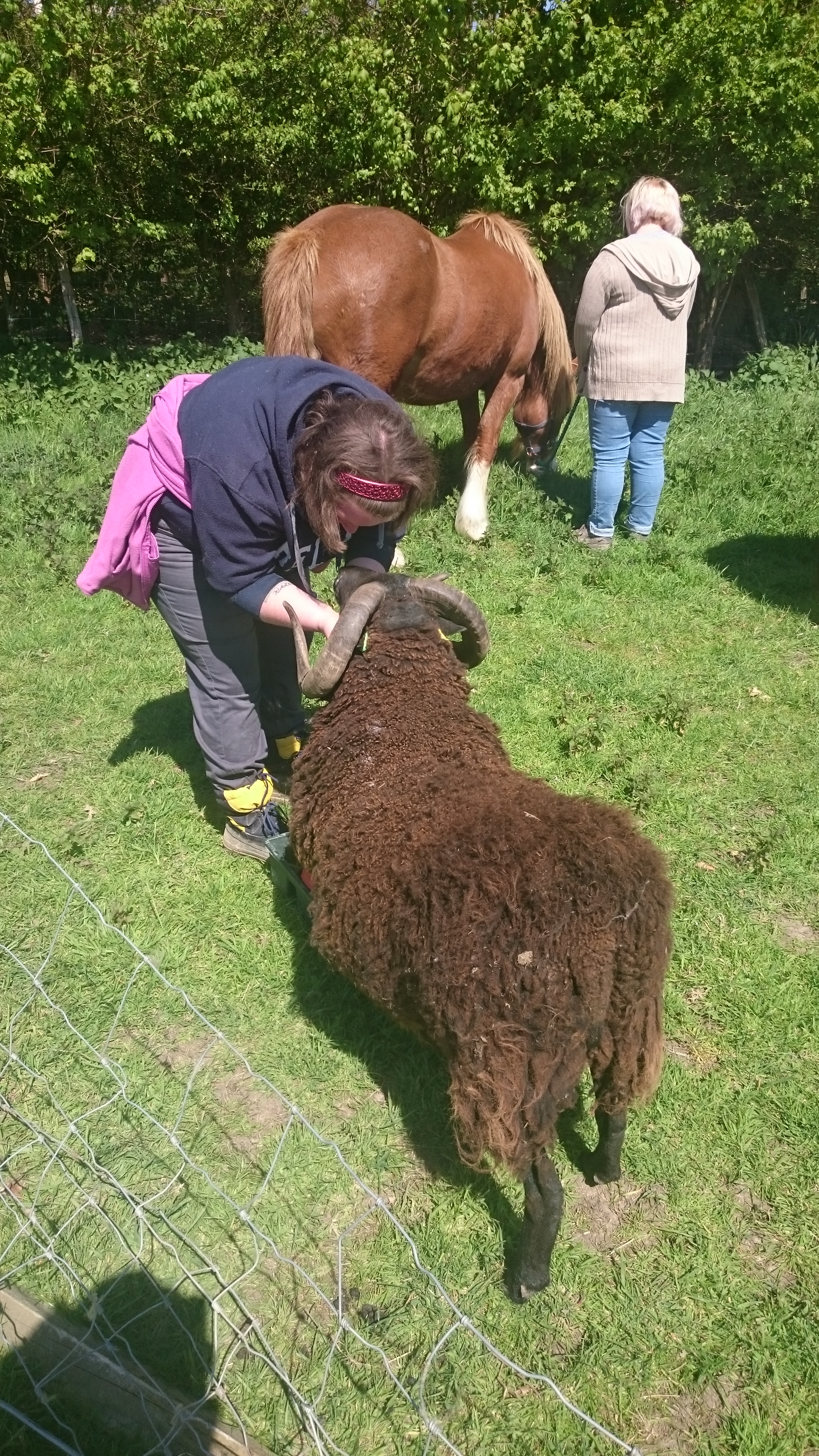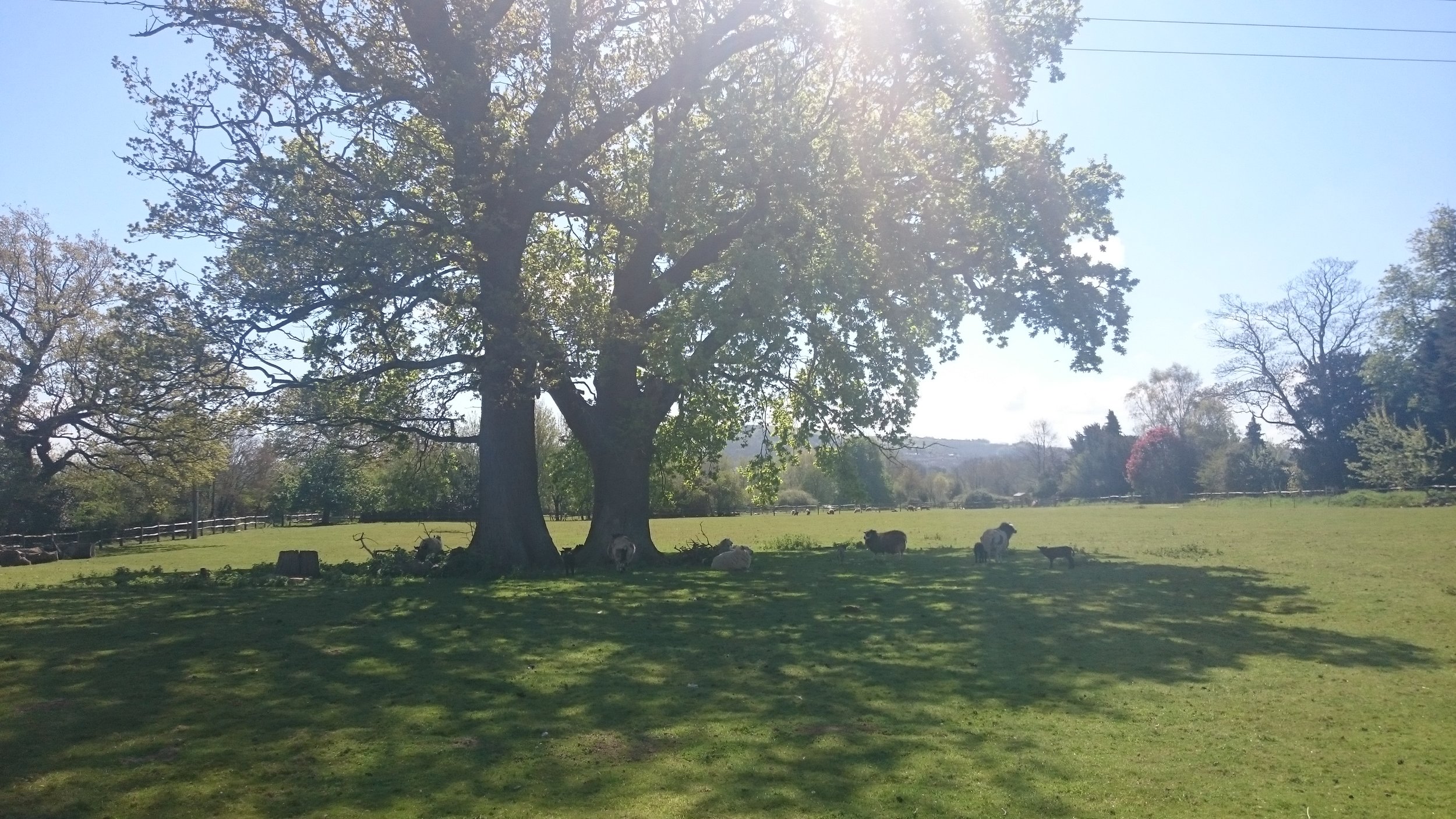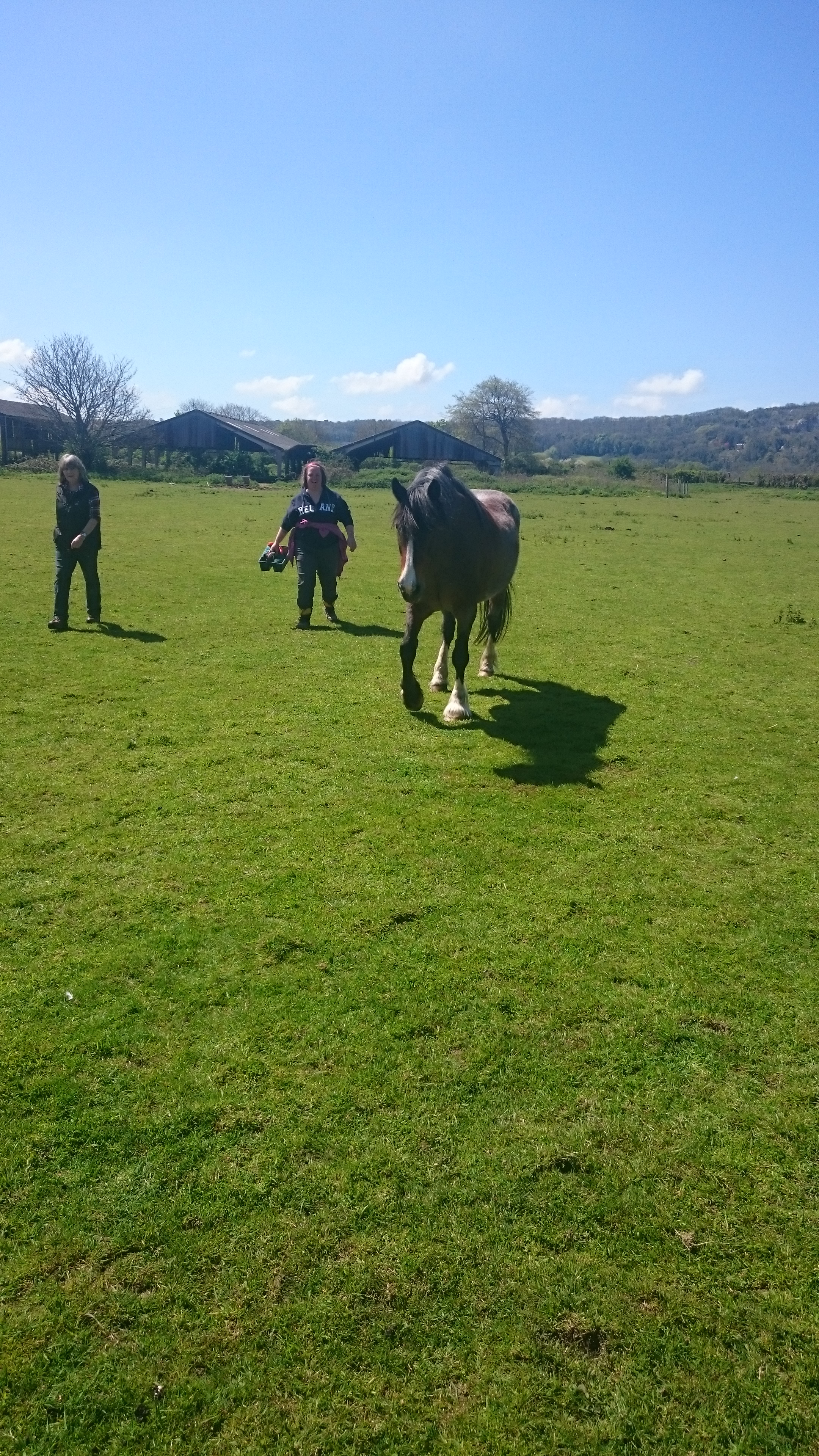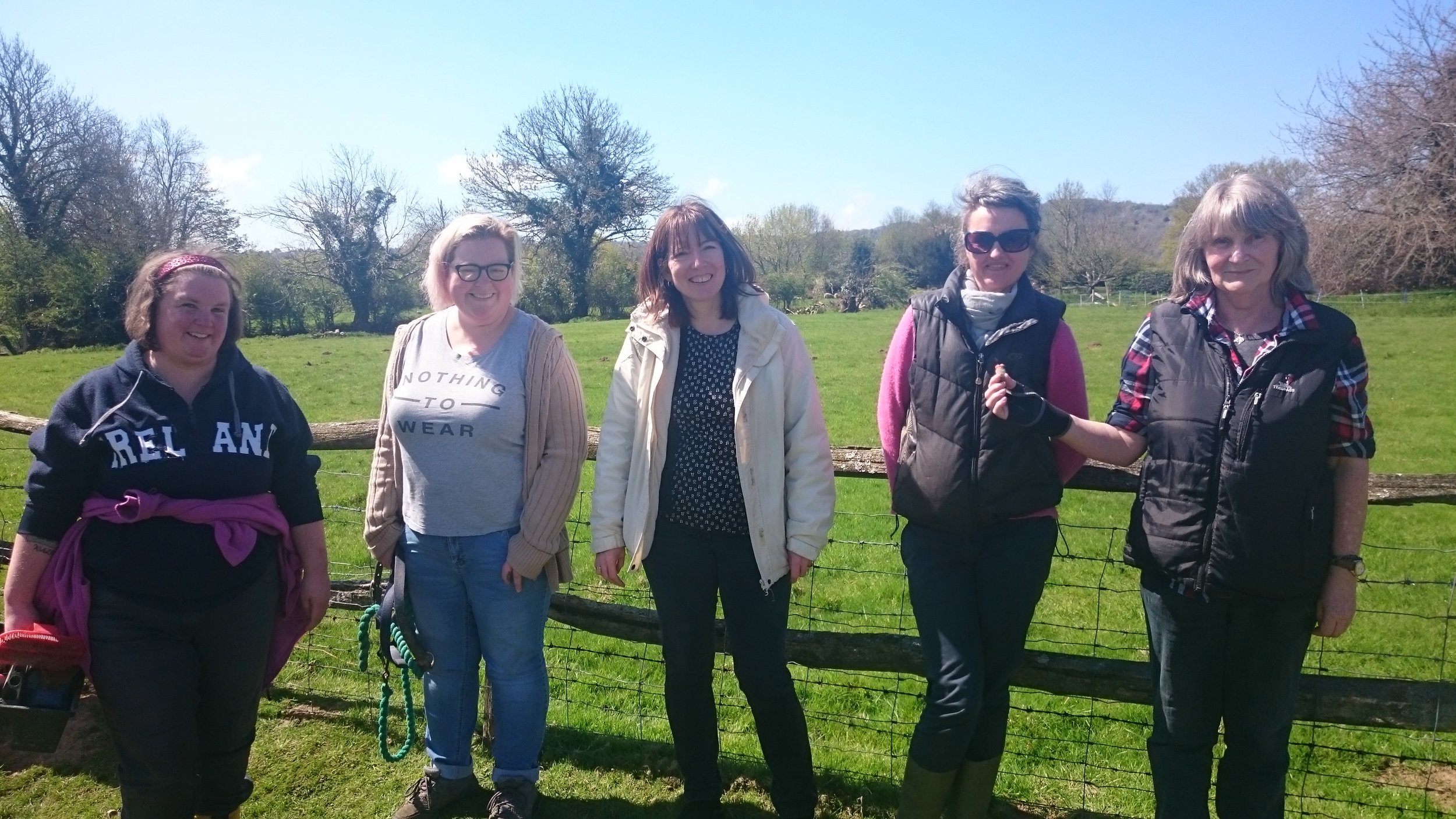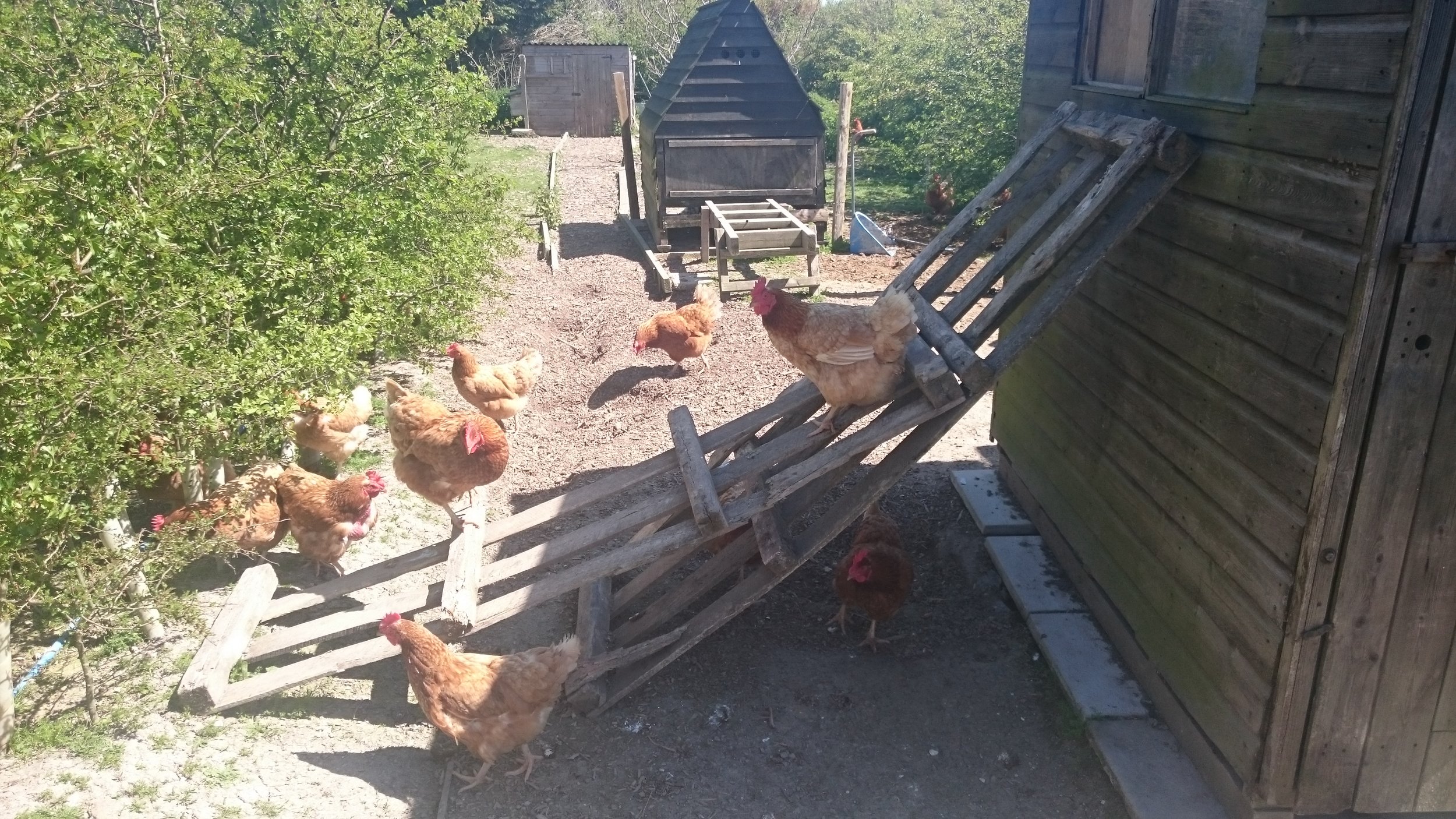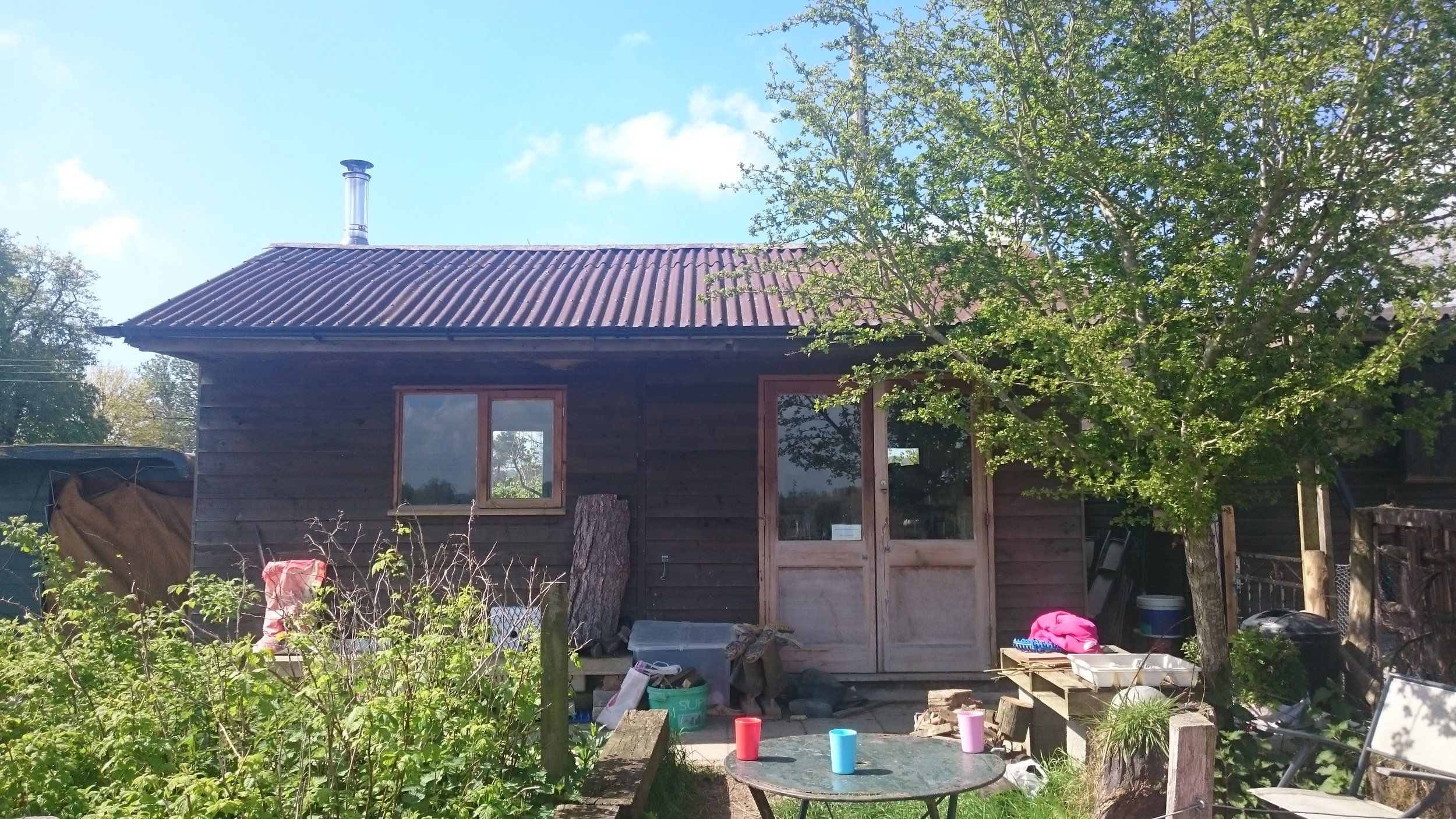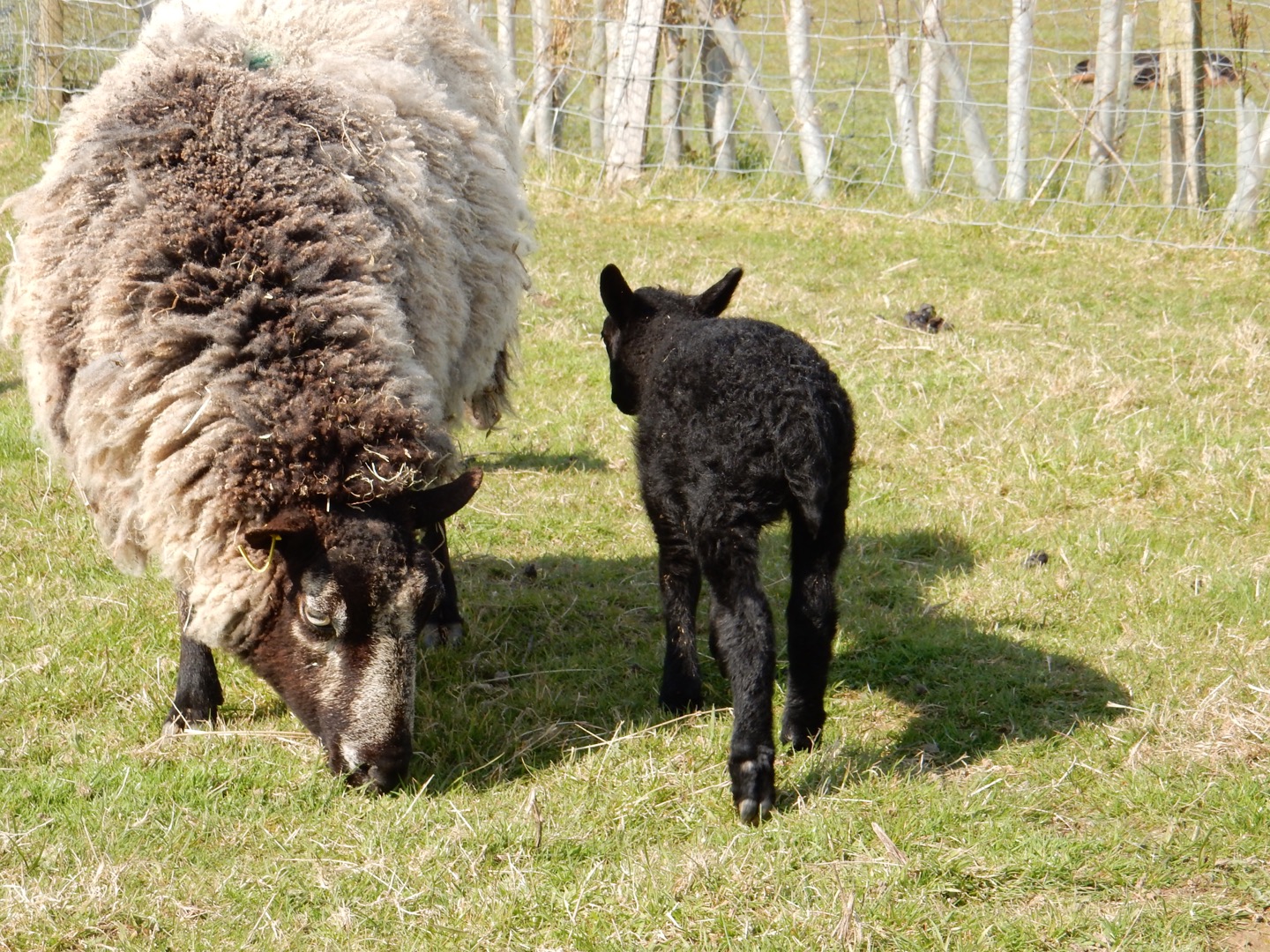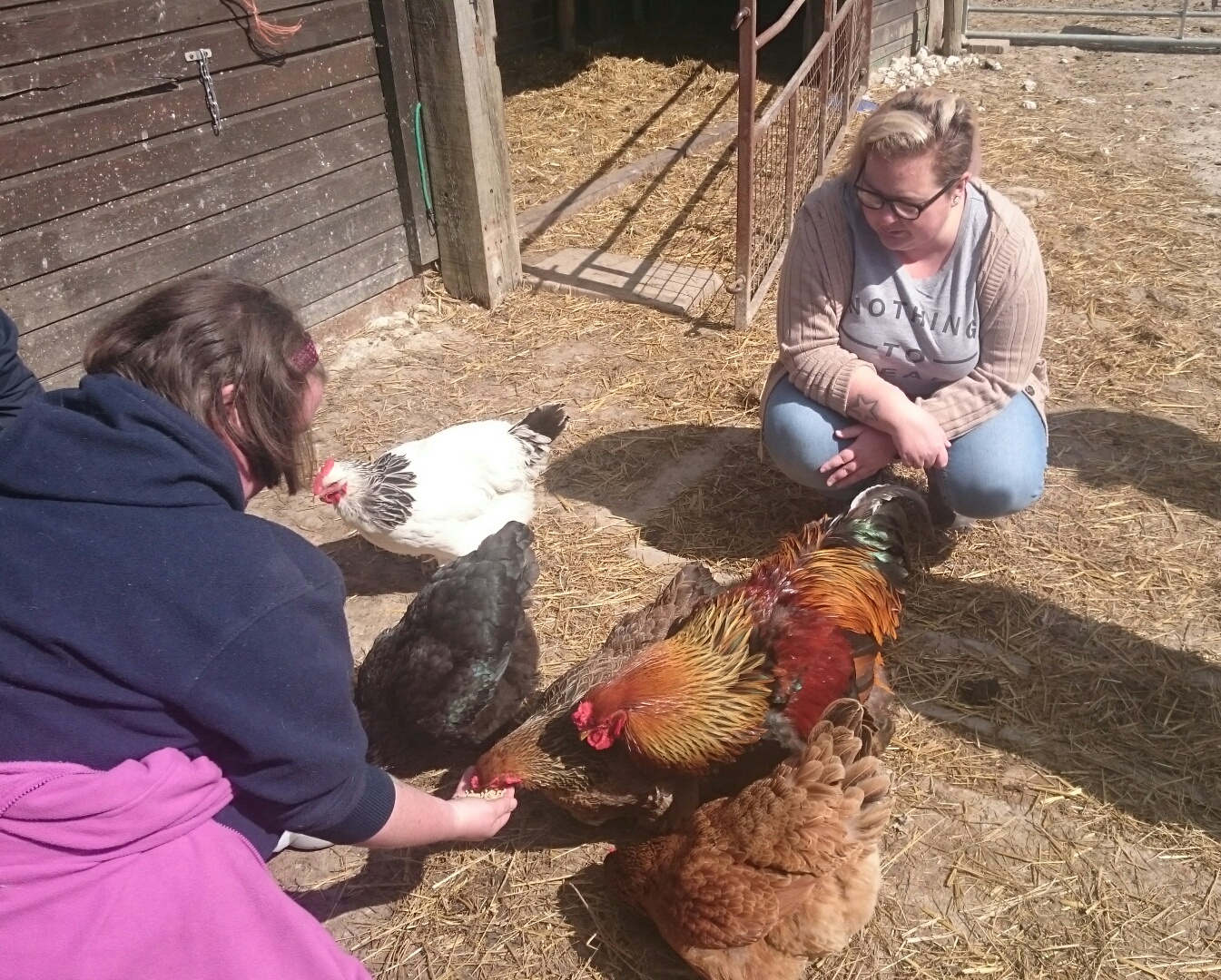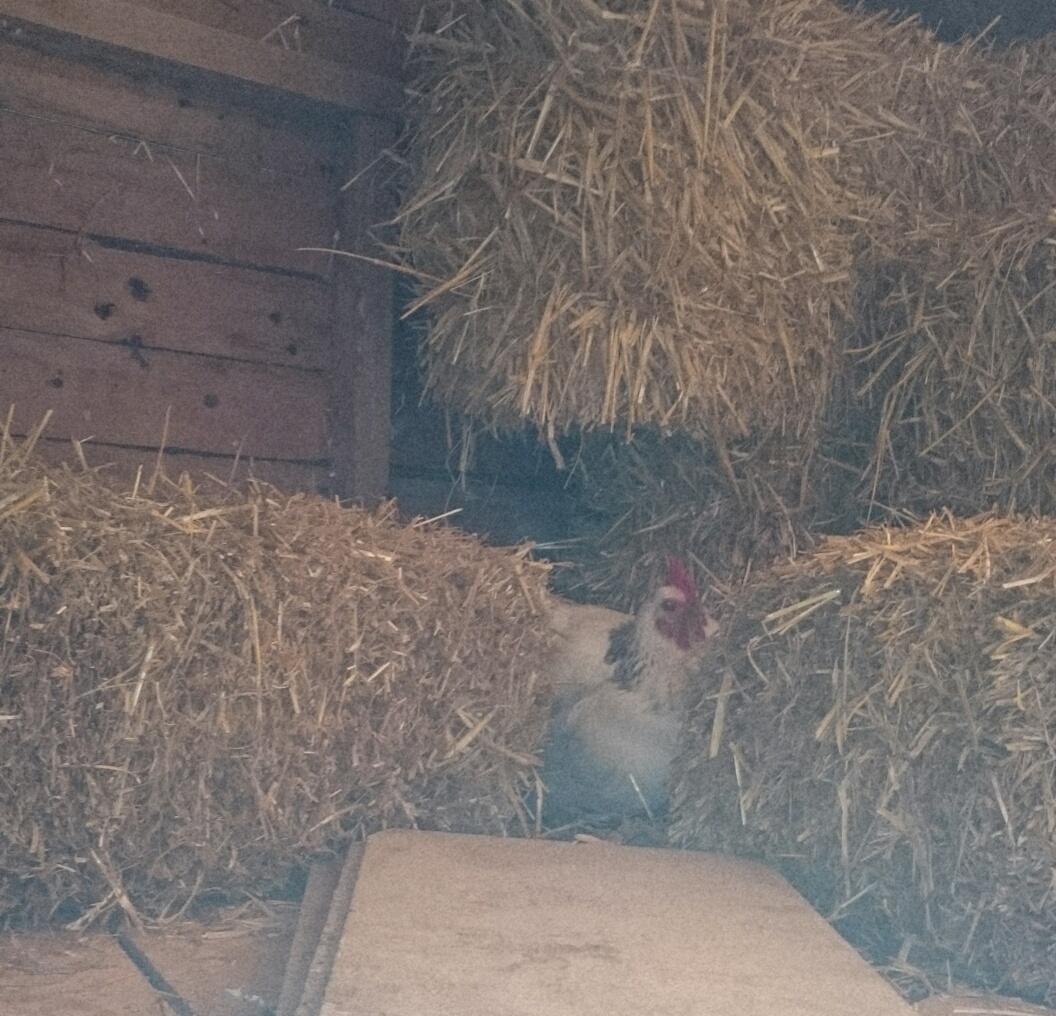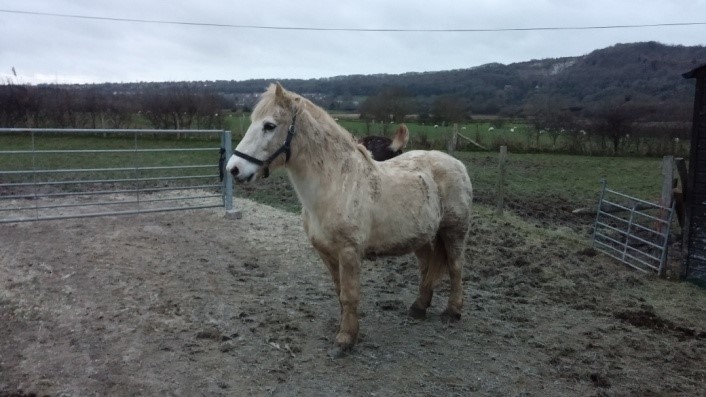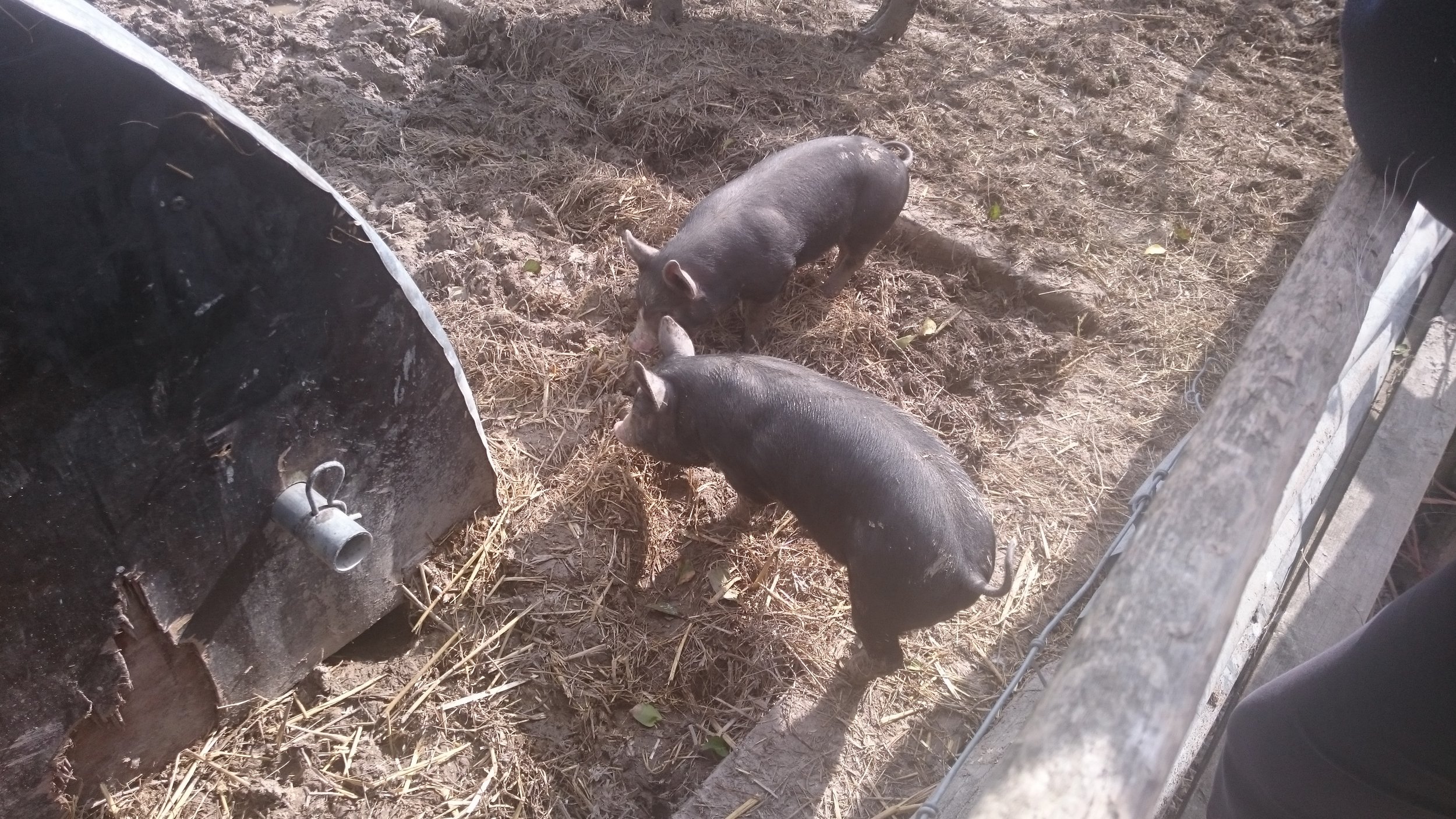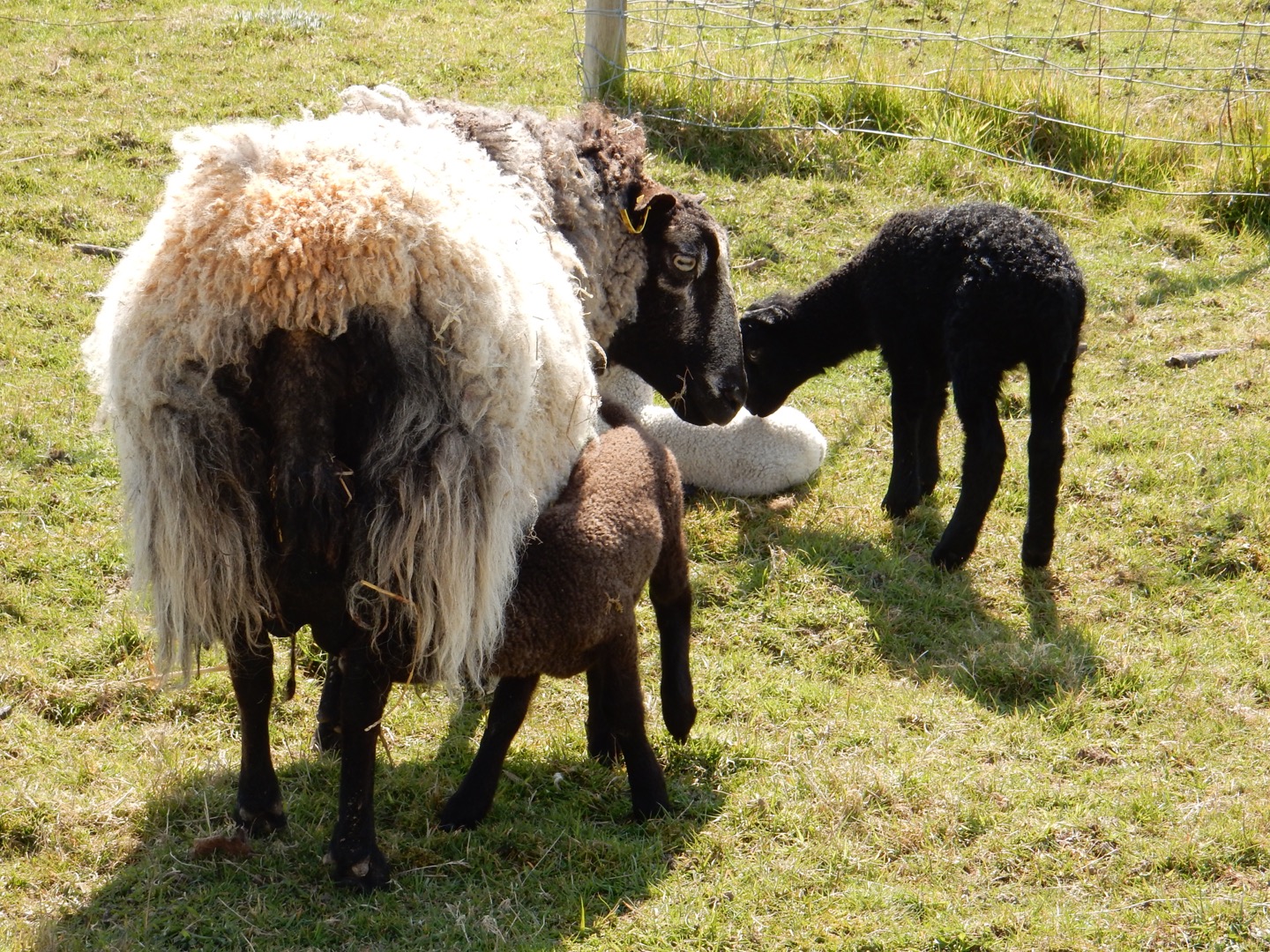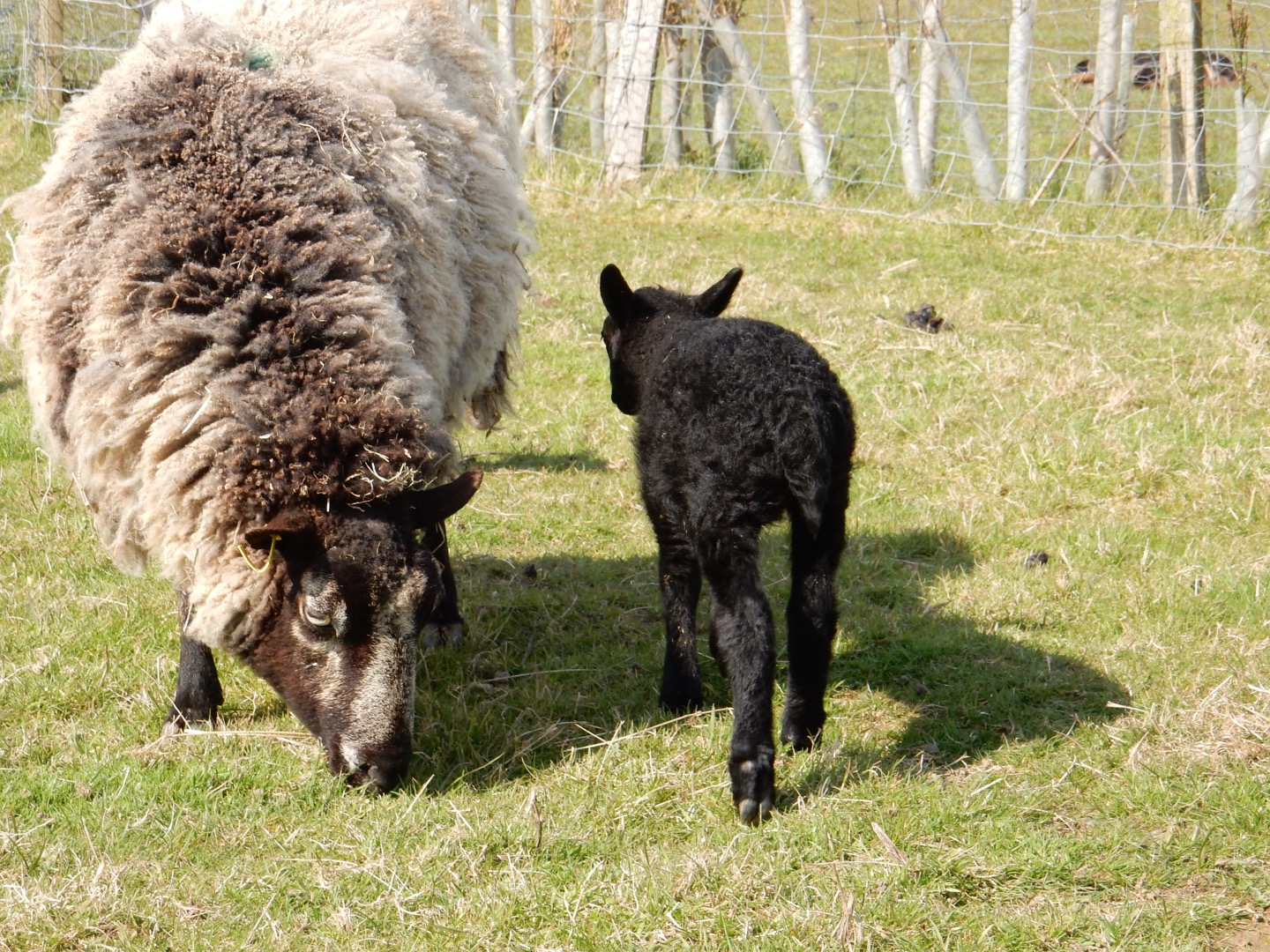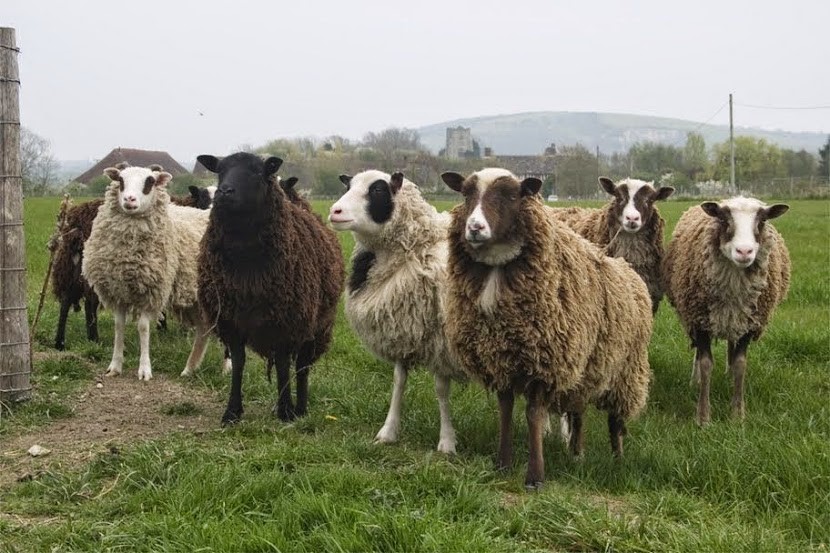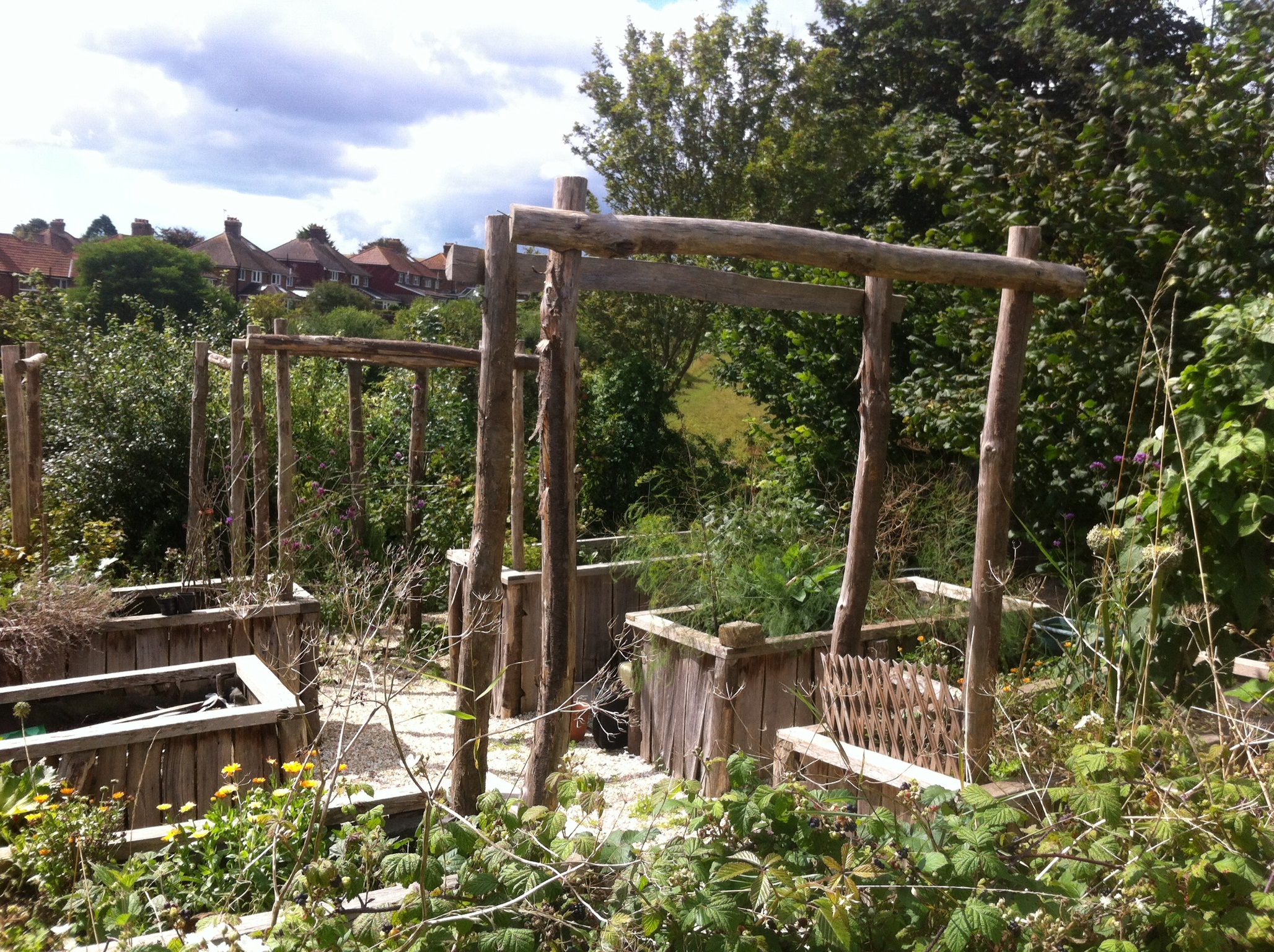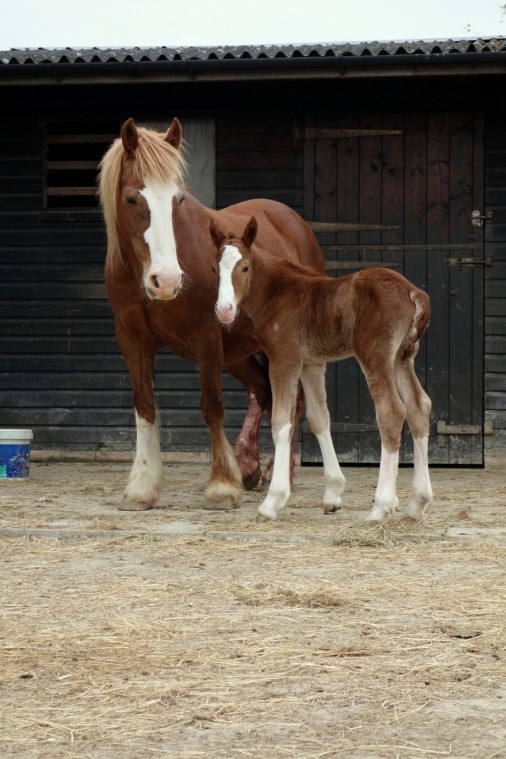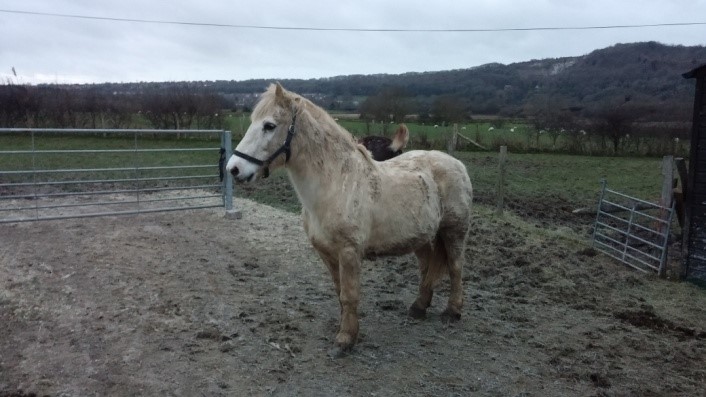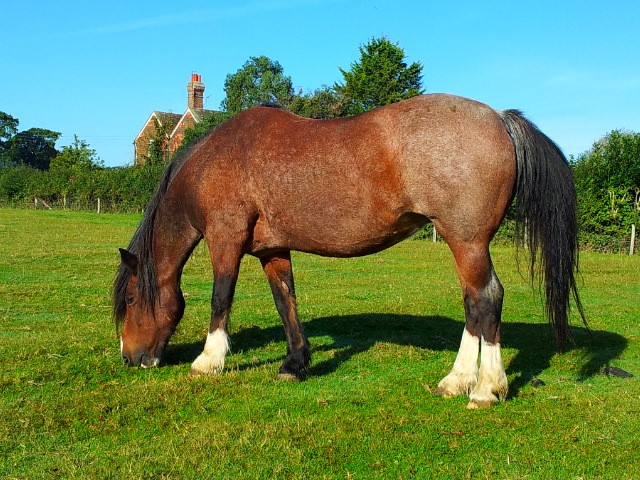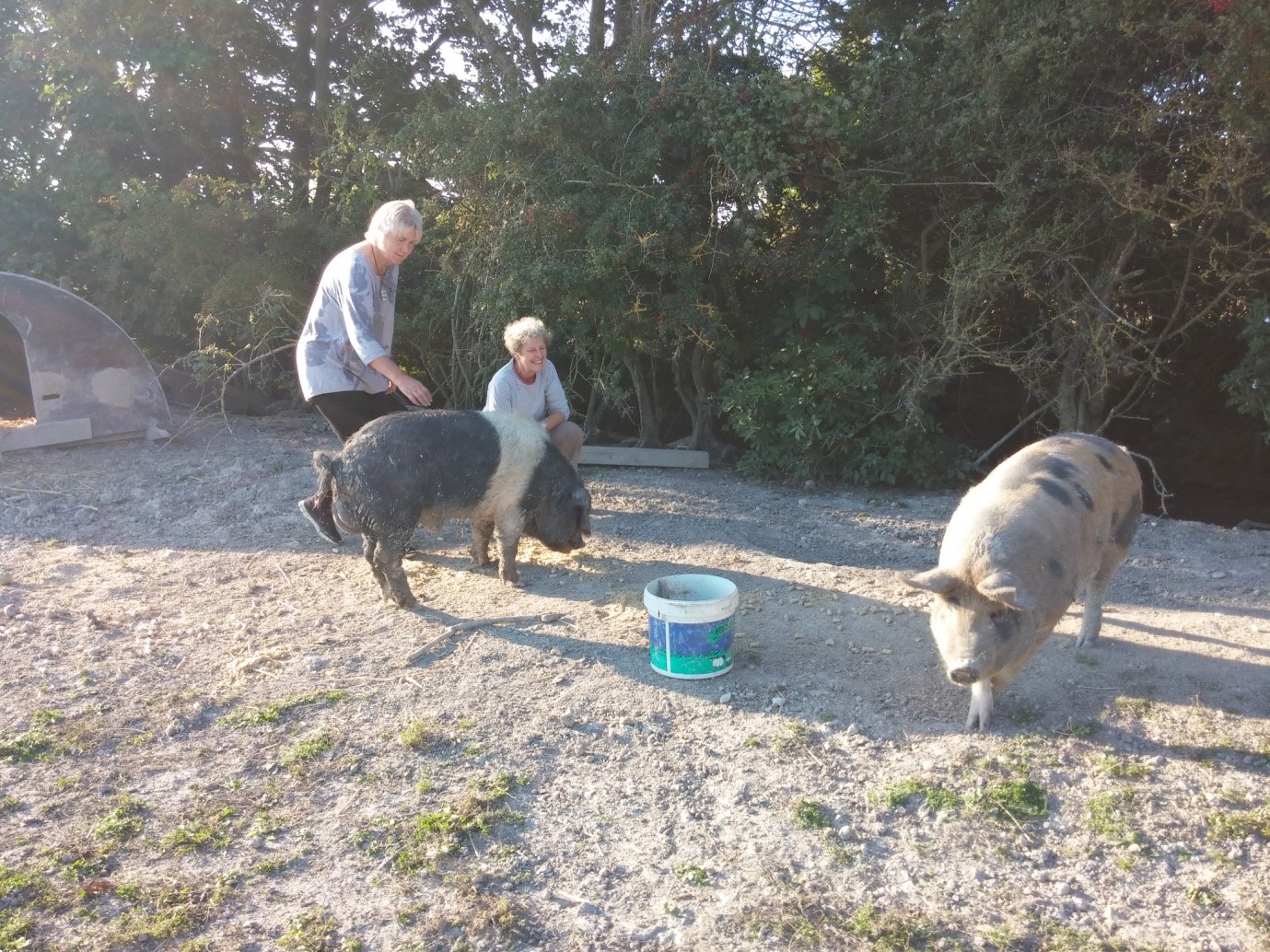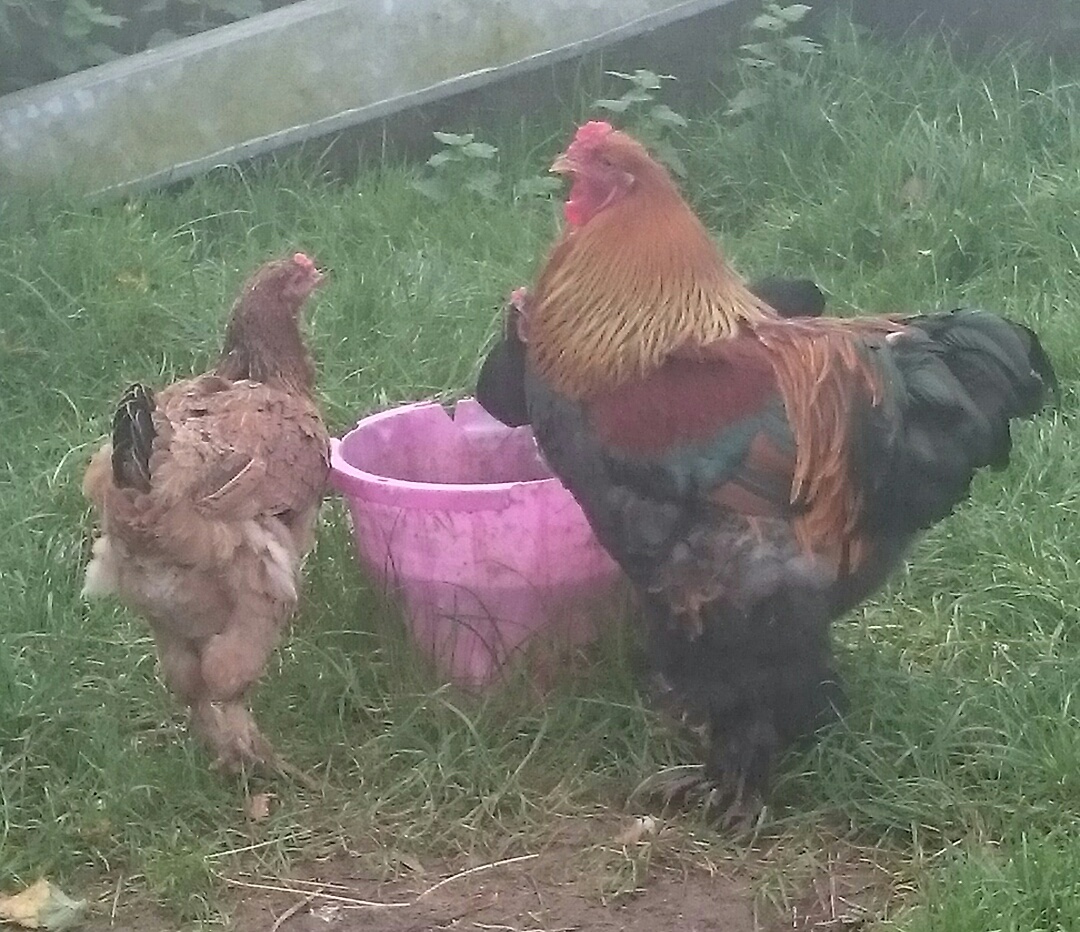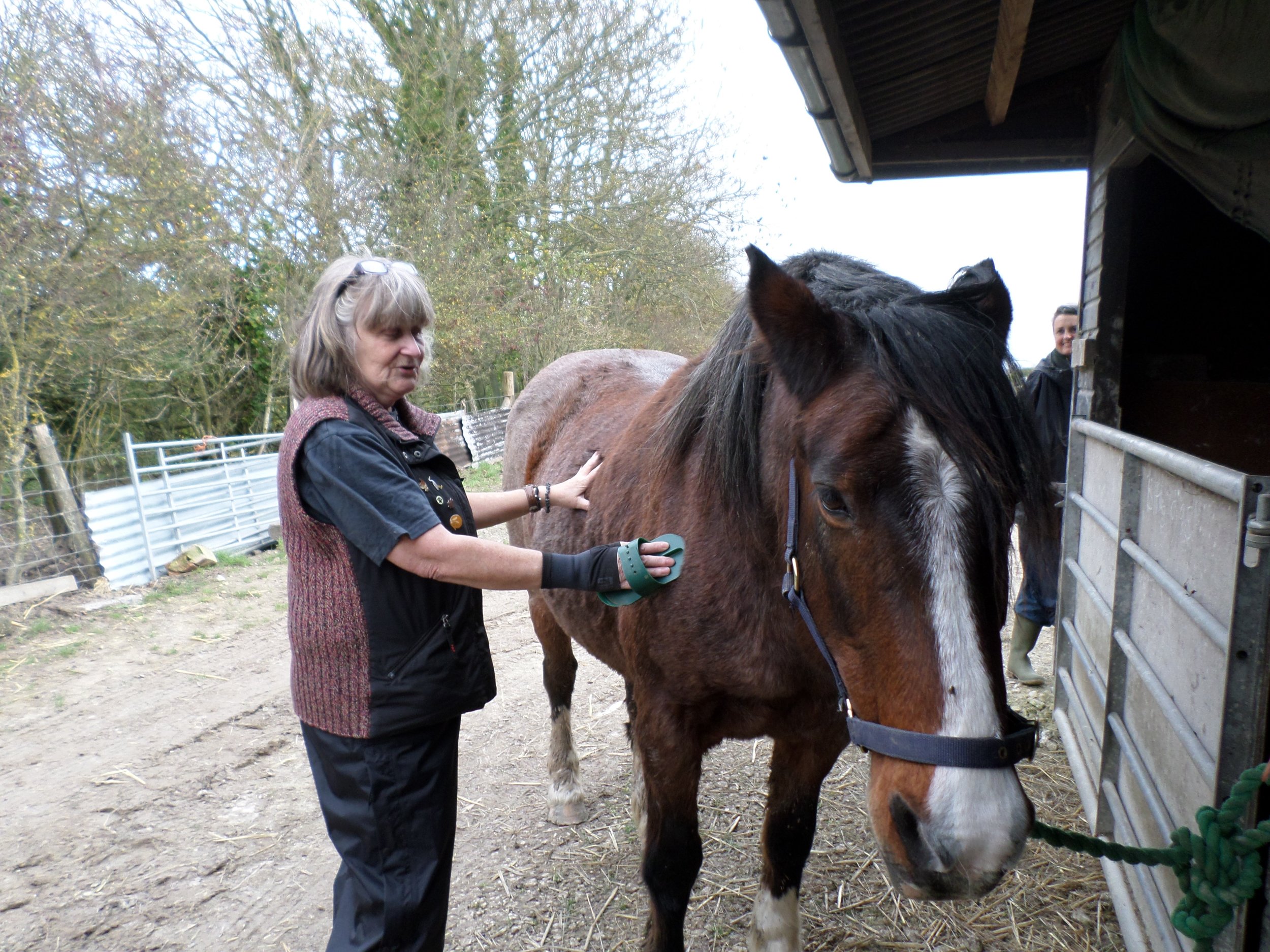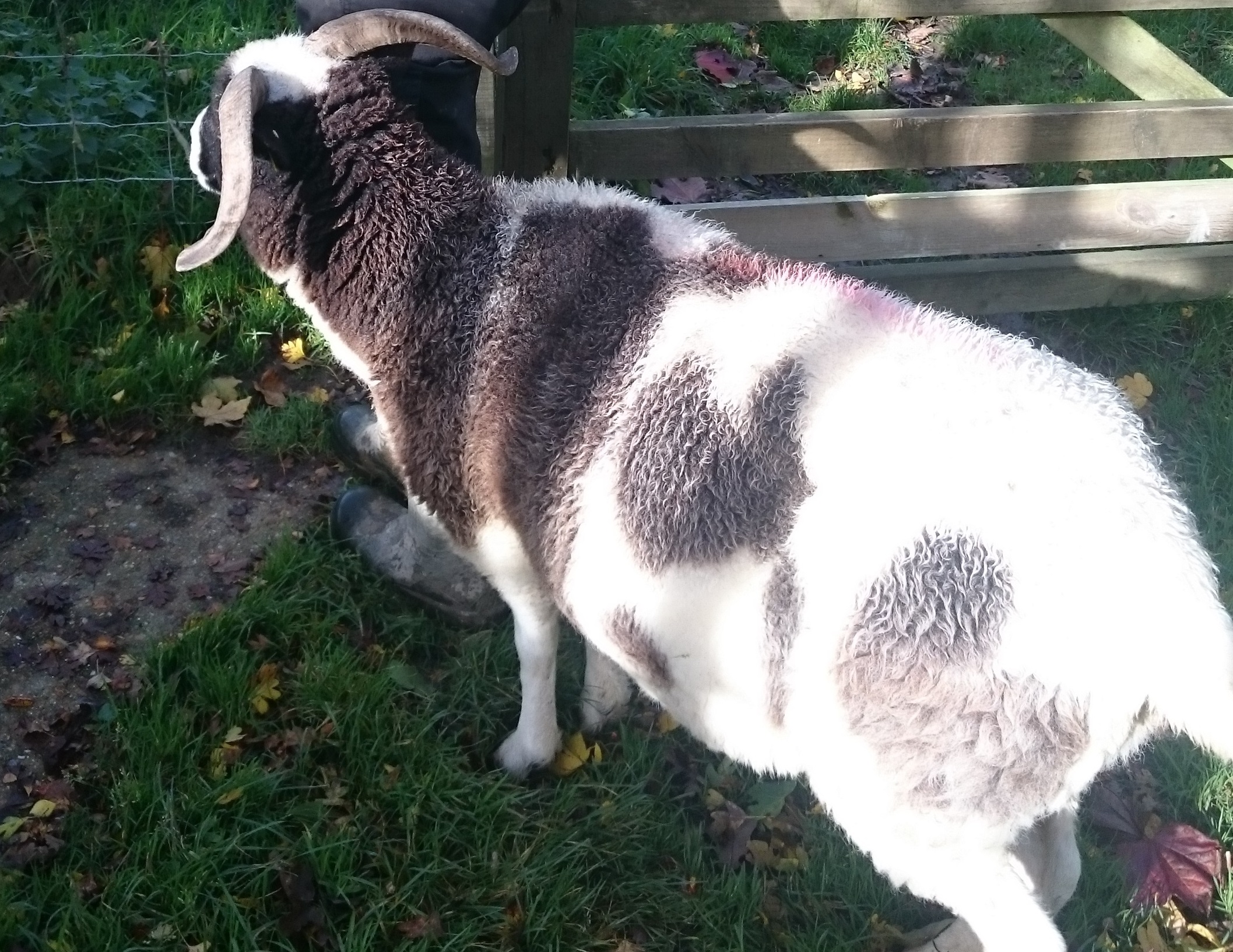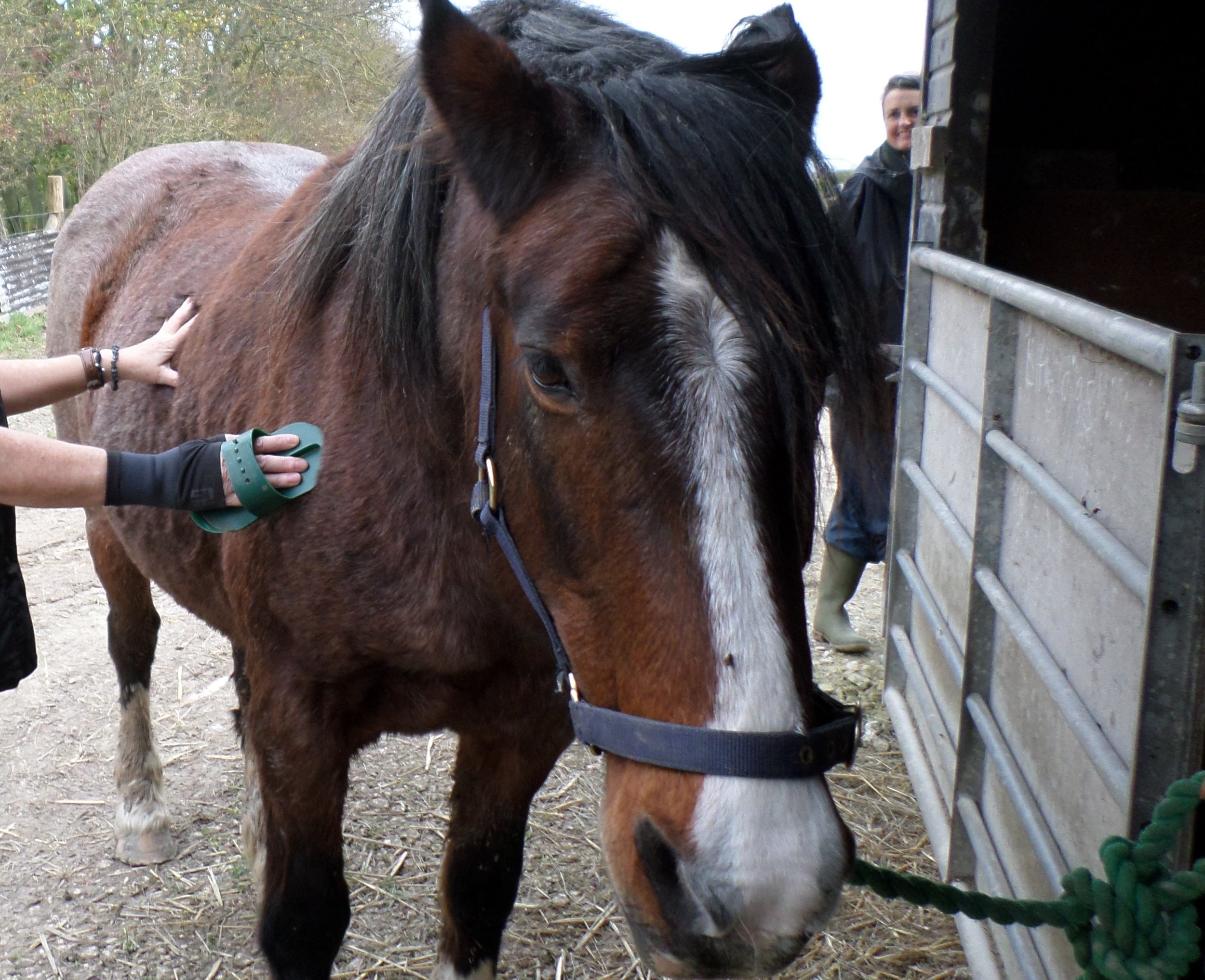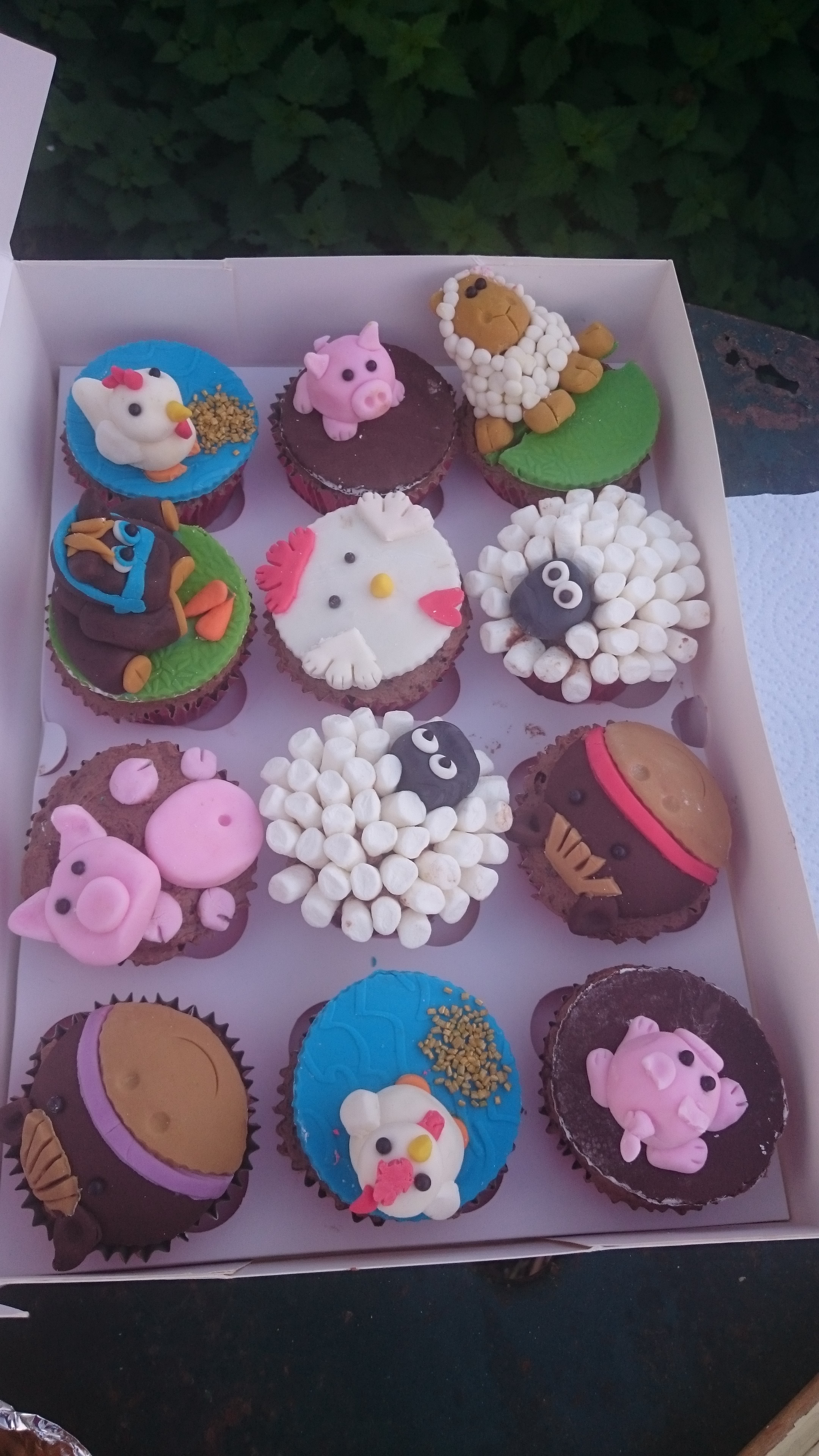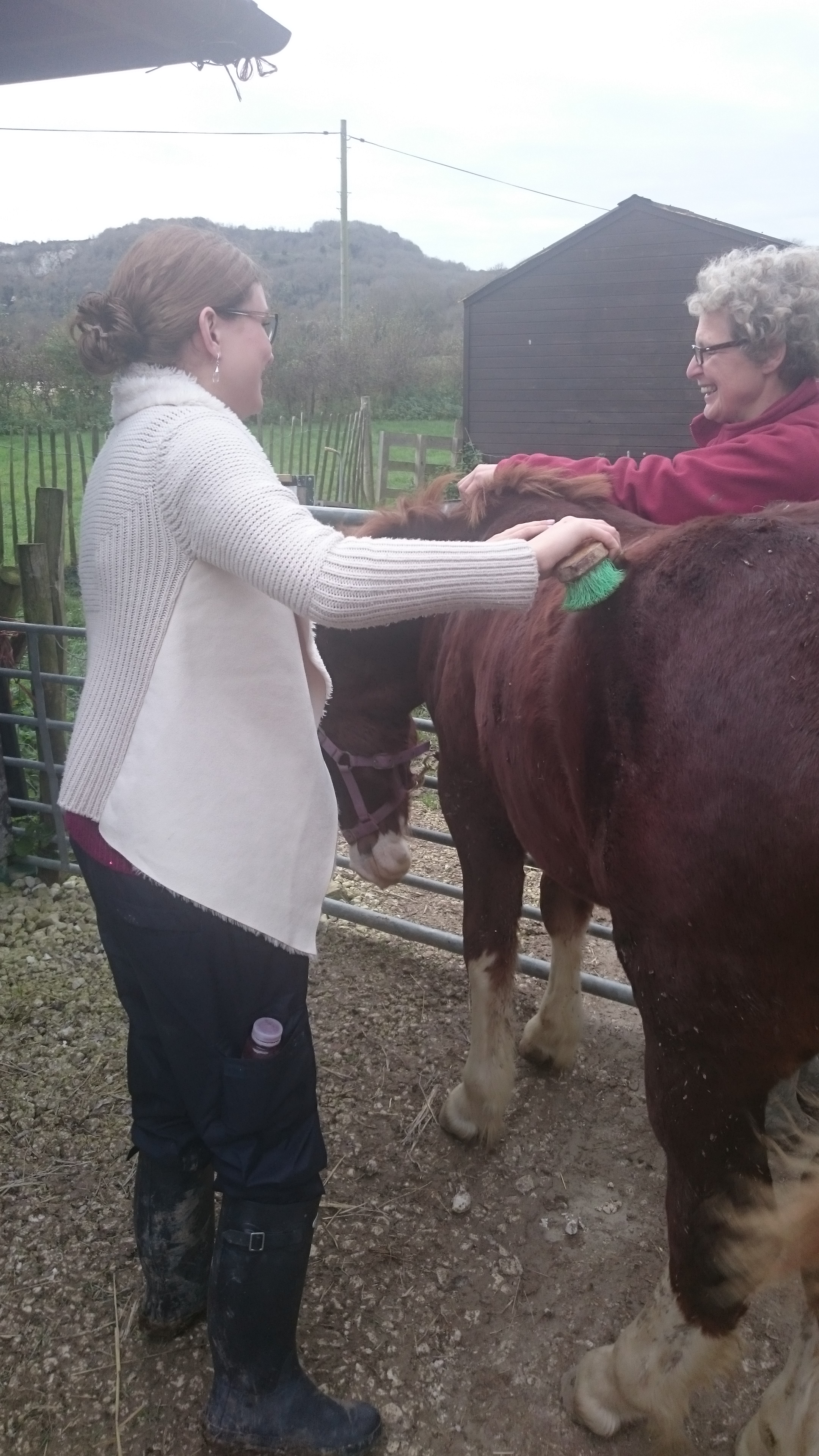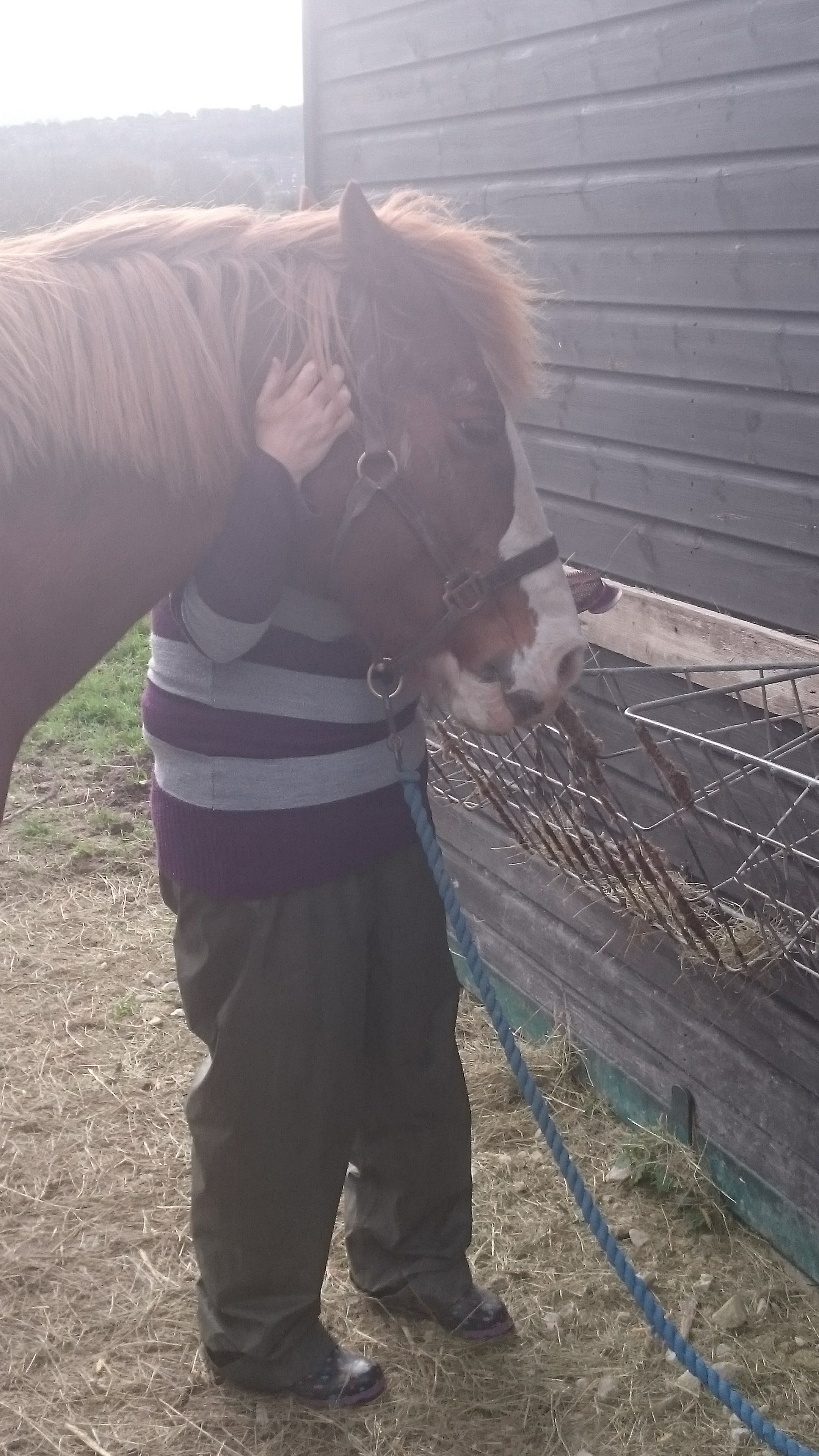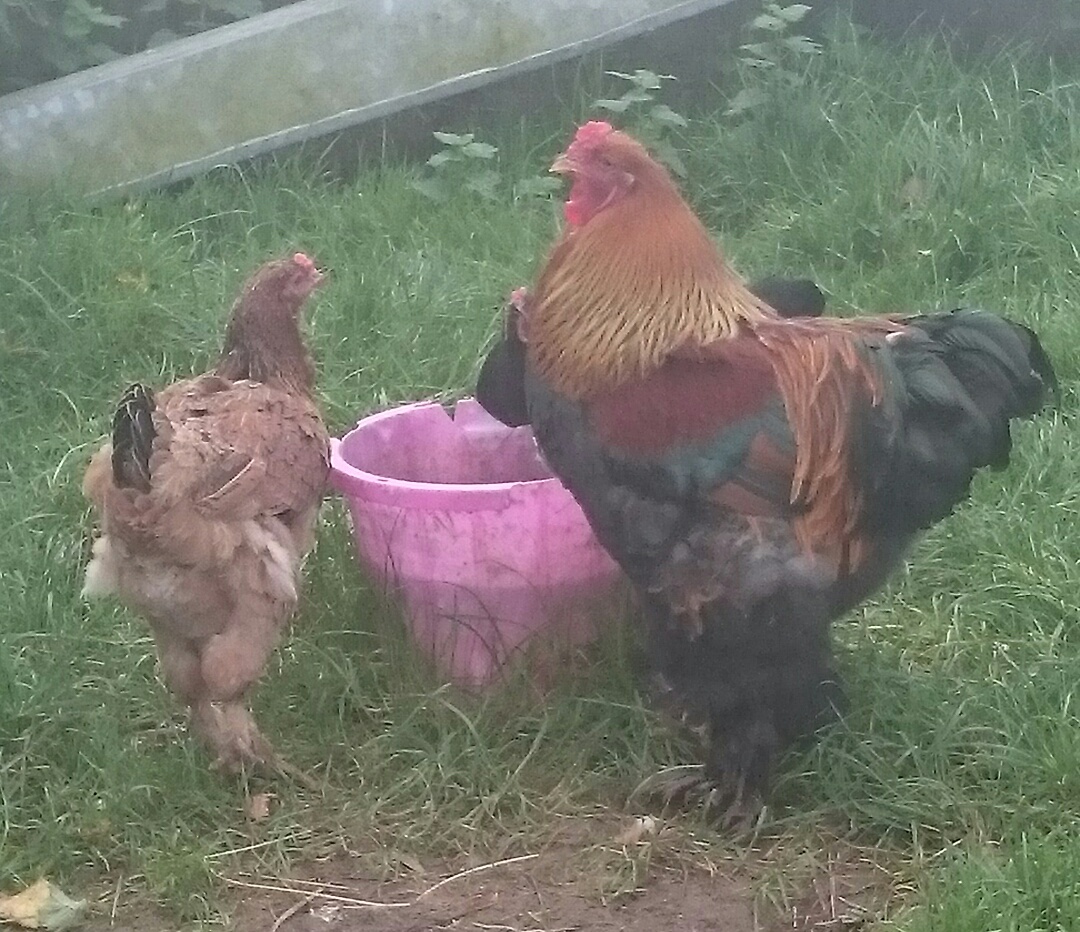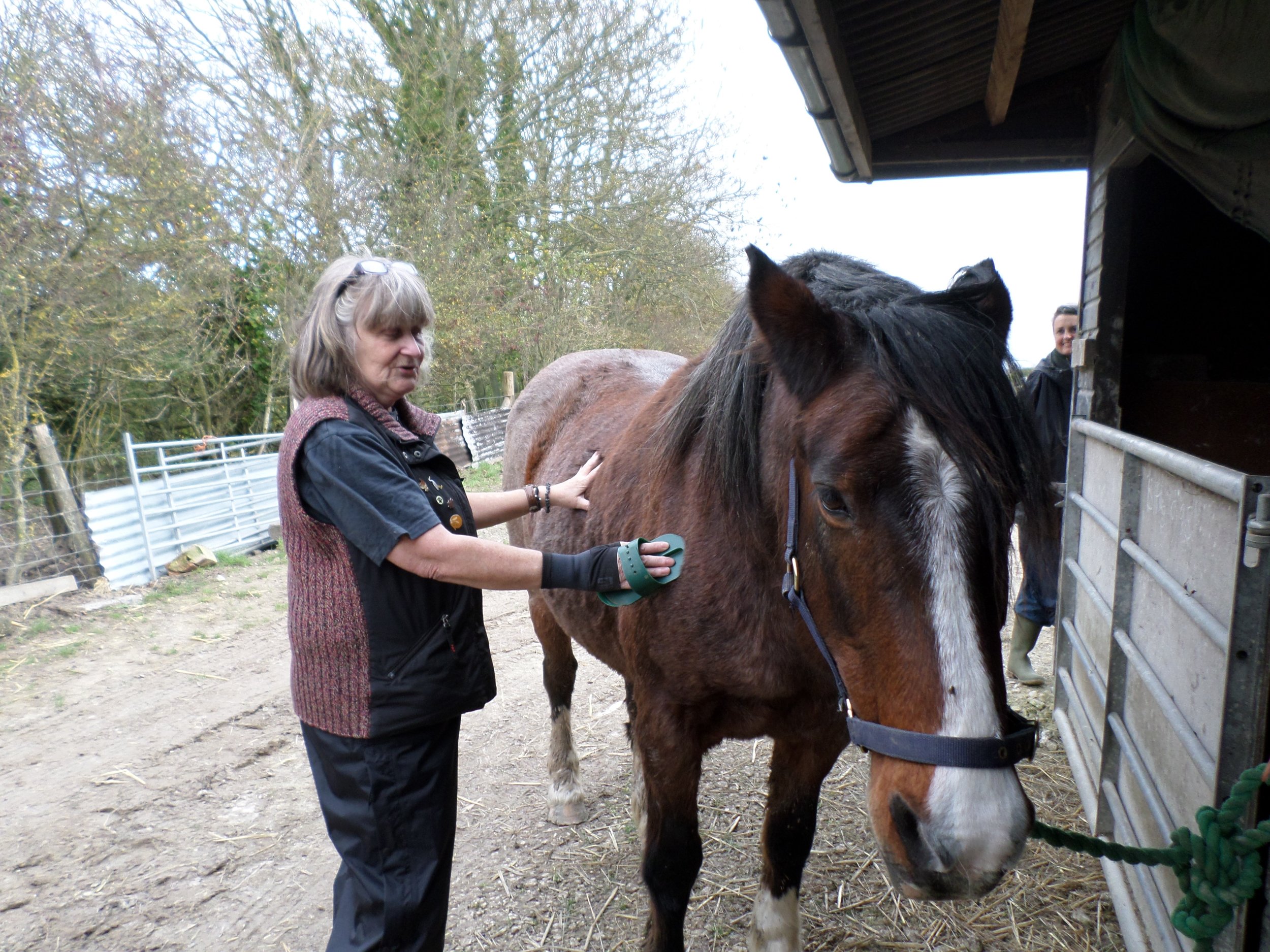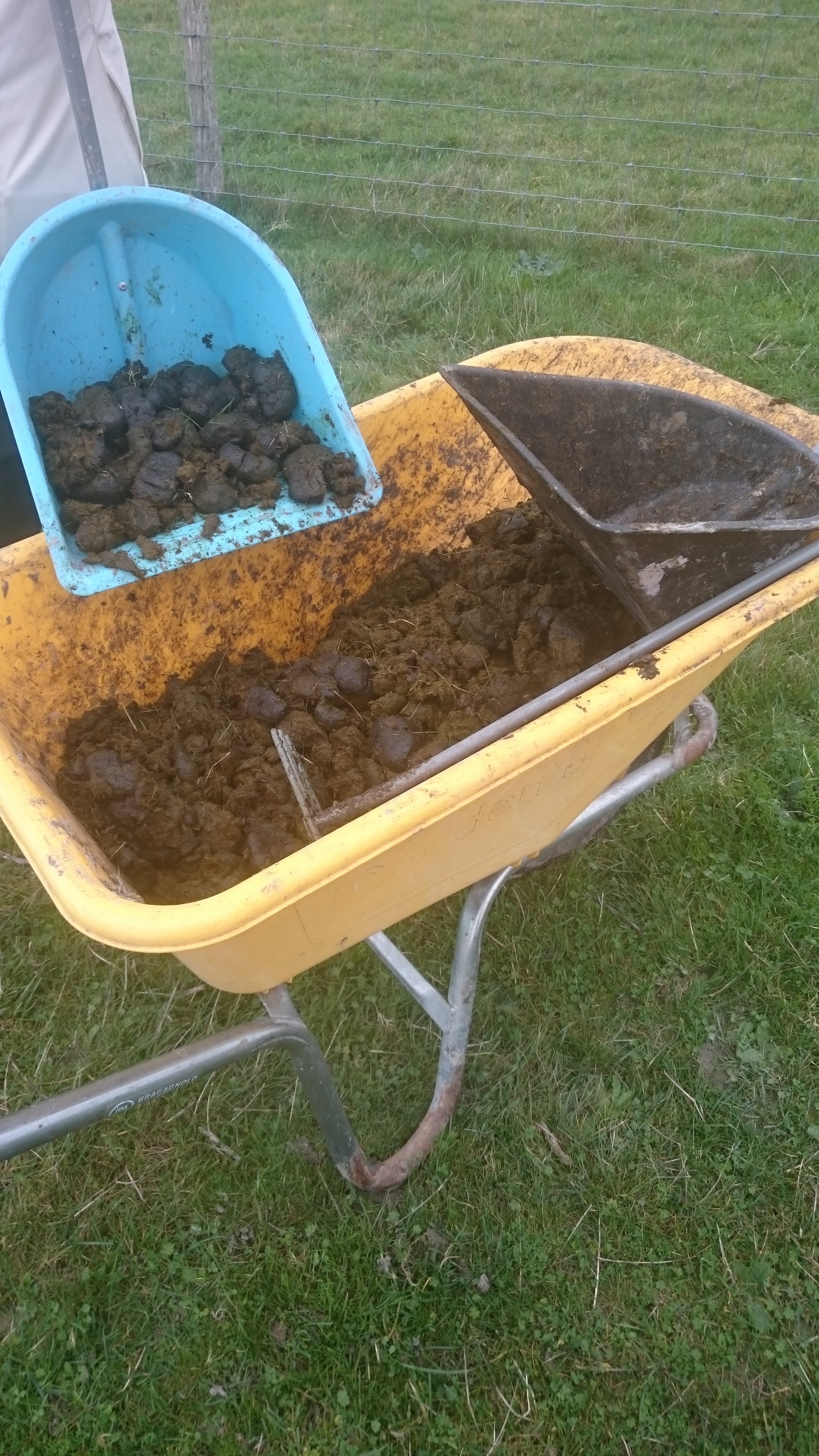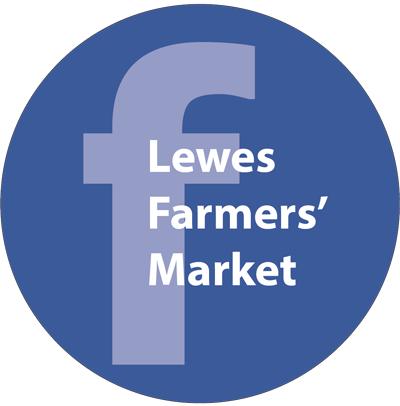We had a special January session with a group from Bluebell House Recovery Centre, cutting willow from the bed at Baulcombes Barn. The willow has to be cut by March. Here's some more information about growing willow.
The Bluebell House group could stay later than a usual Wednesday morning session, so they brought lunch with them. And secateurs! Owena provided the gloves and we headed out to the willow bed - in wellies - it was very muddy.
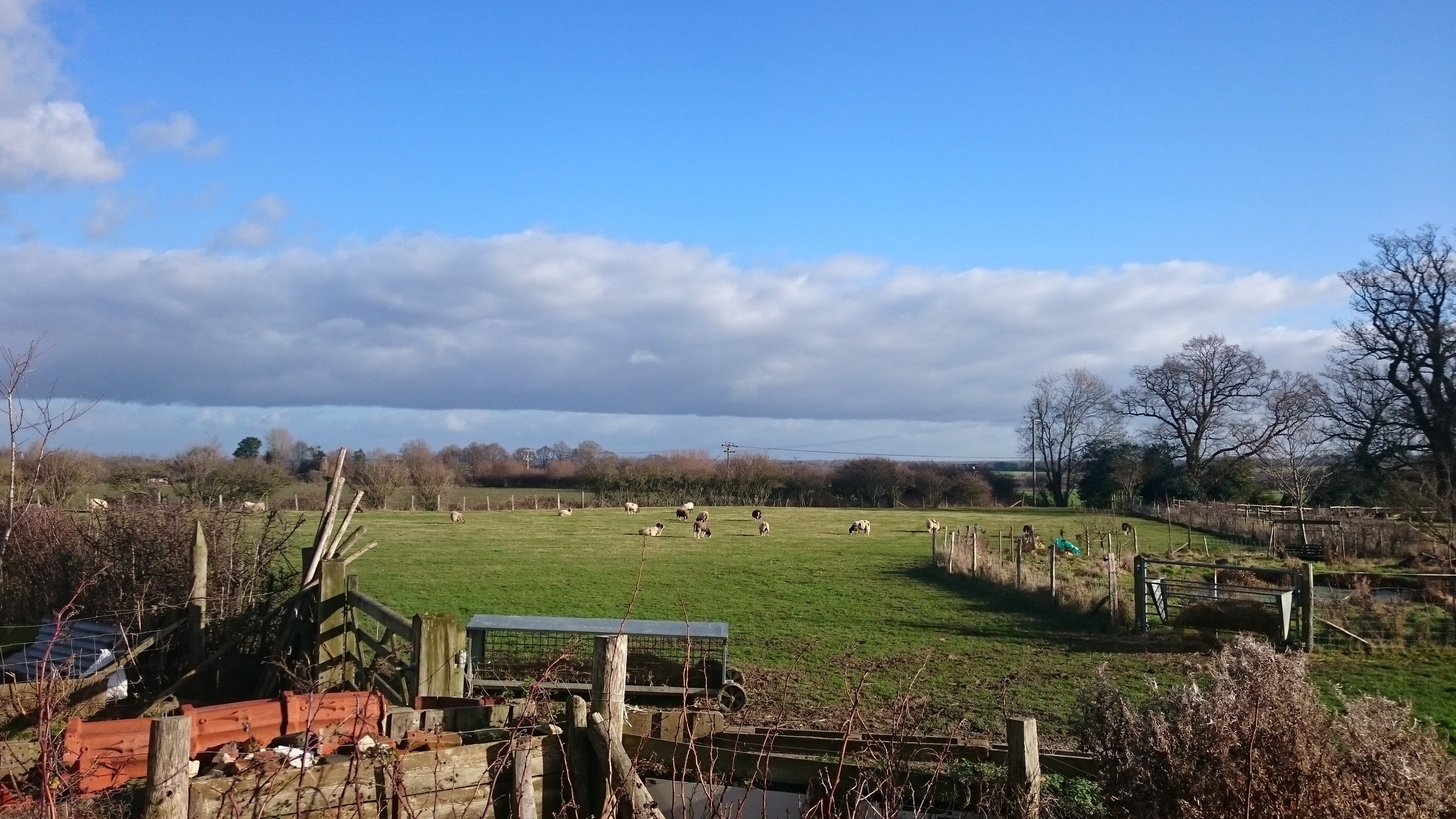 First of all, Owena needed to strim back some brambles to make it easier for us to cut the two types of willow growing in the bed, so most of the group left her to it and carried on walking beyond the willow bed in order to go and see the horses and pigs.
First of all, Owena needed to strim back some brambles to make it easier for us to cut the two types of willow growing in the bed, so most of the group left her to it and carried on walking beyond the willow bed in order to go and see the horses and pigs.
We didn't see the hens, because they are are shut in at the moment, because of the risk of them contracting avian flu from wild birds.
Nicola was keen to see Buster, and so we went to the horse field, via the pigs and the yard to fetch a wheelbarrow, so some of us could clear up poo from the field.
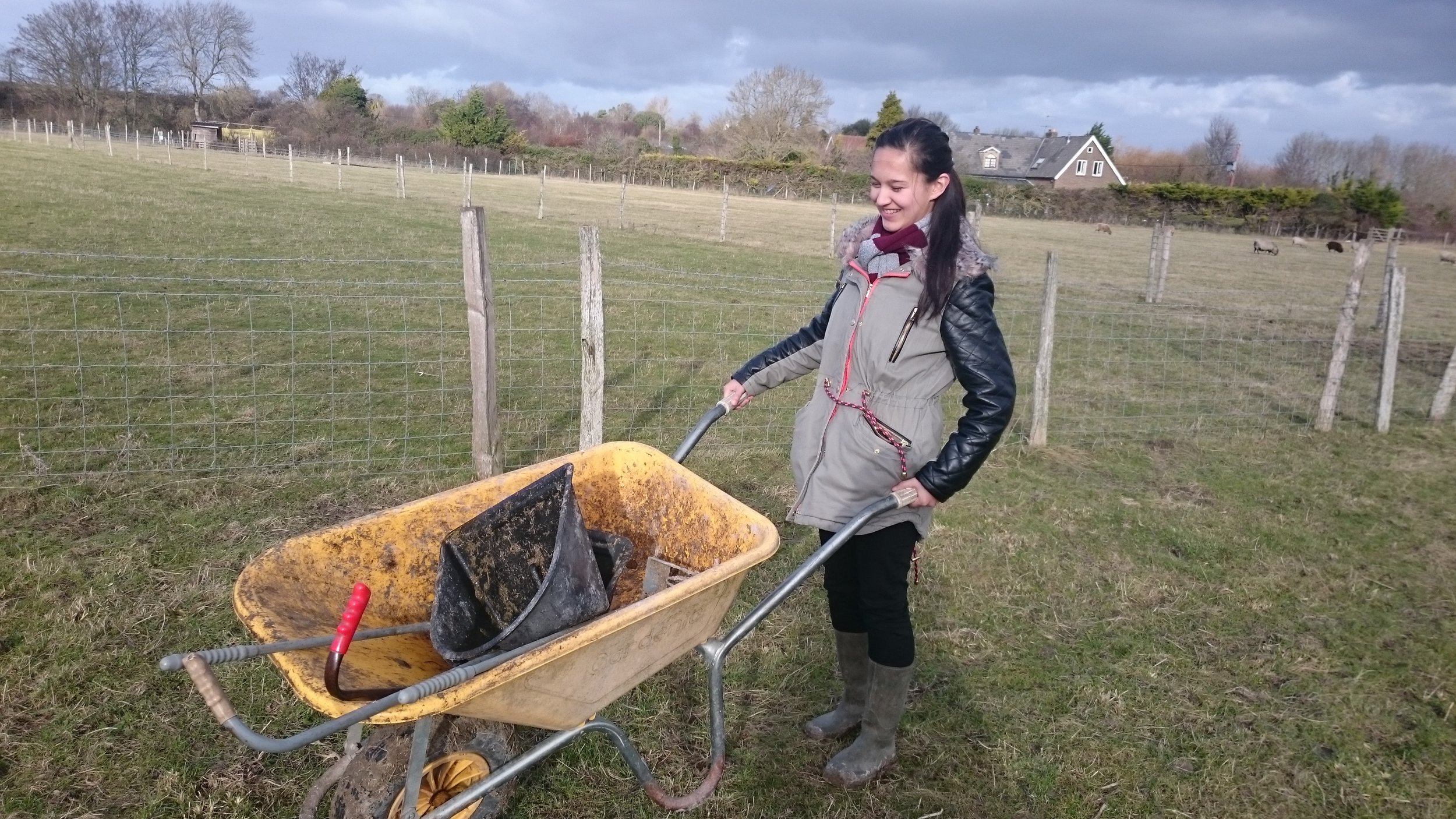
The younger pony Frankie came up to the wheelbarrow to see what was happening, but then put his ears back. This is probably because he didn't know my face. Horses (and sheep) can recognise human faces.
Oscar was brave enough to approach Buster. Buster is a friendly pony, but this was Oscar's first time touching a horse. Nicola supported and encouraged him and he did really well.
Then we headed back to the willow beds. We laid a tarpaulin on the ground to put the willow once cut, because the ground was so wet. Then some of us cut the willow, others sorted it into piles of thin, medium and thick stems. Some bits were too short and wispy to use, so they will be burned.
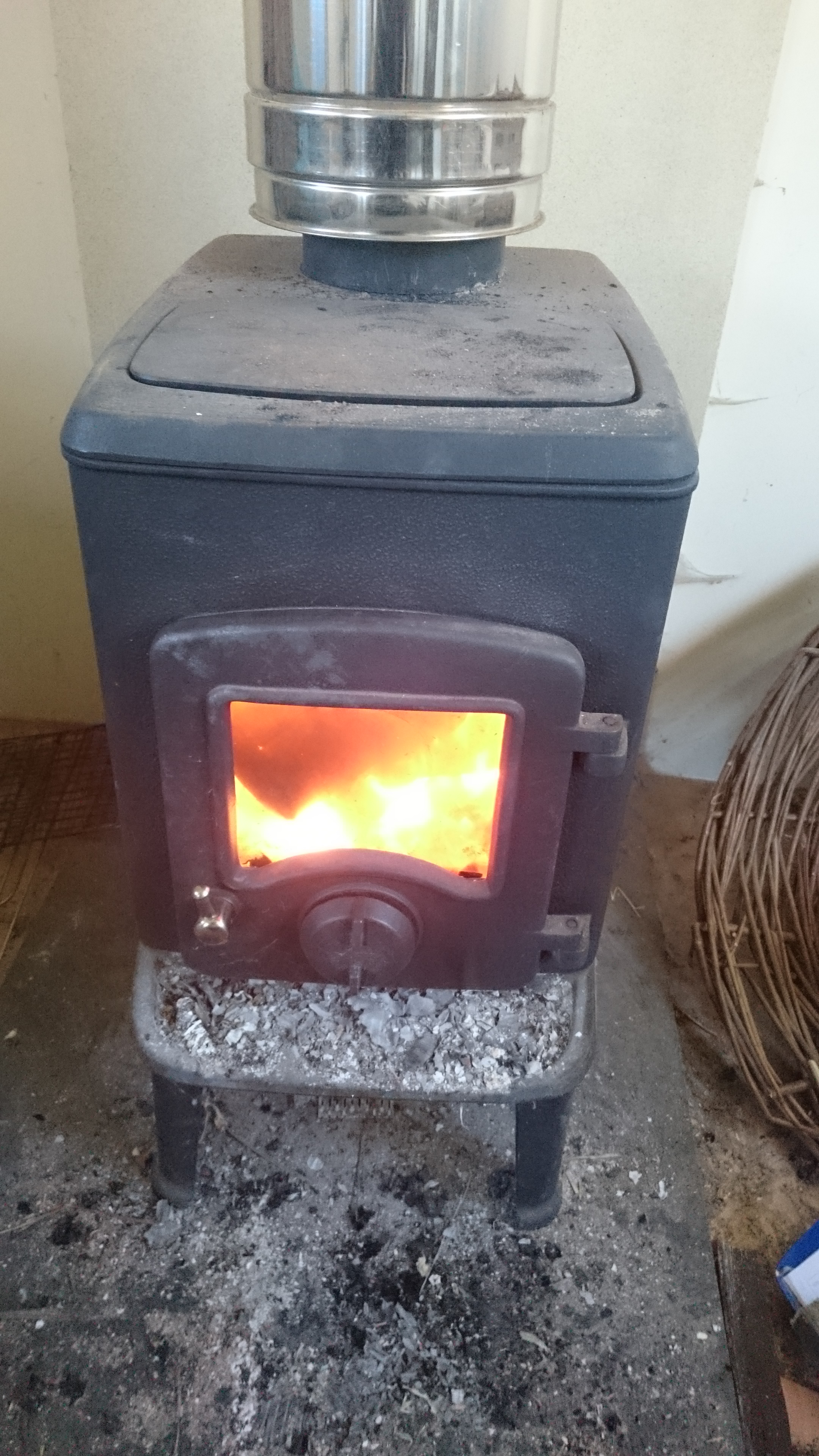 After some hard work, the group headed back to the cabin for lunch around the wood burner to warm up.
After some hard work, the group headed back to the cabin for lunch around the wood burner to warm up.
We all felt it had been a good day. It was lovely to welcome new people as well as those who had come before. People tried things they hadn't done before, such as going right up to a horse.
With the willow cutting and sorting and even navigating muddy slopes and climbing under fences, we worked as a team and got a lot done. The fresh air did us good too, as did the company of the animals.
The willow will be ready for weaving in six weeks.
Emma Chaplin


